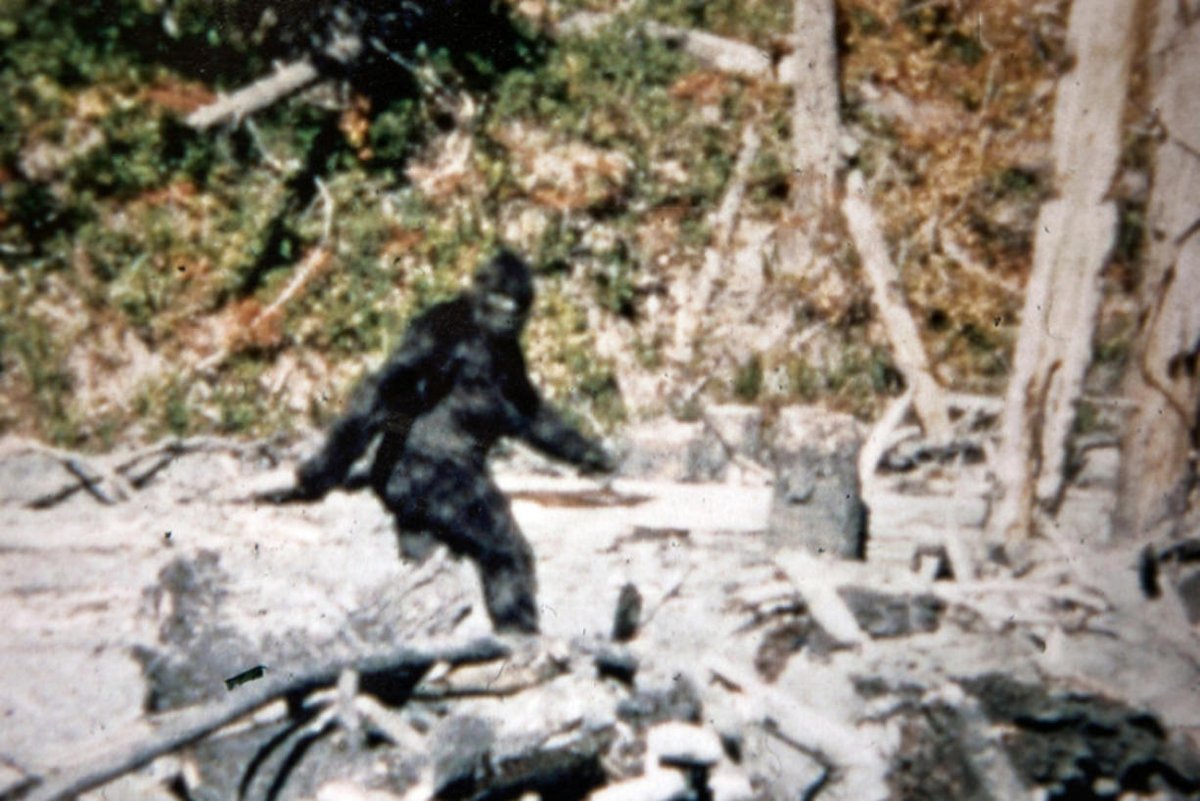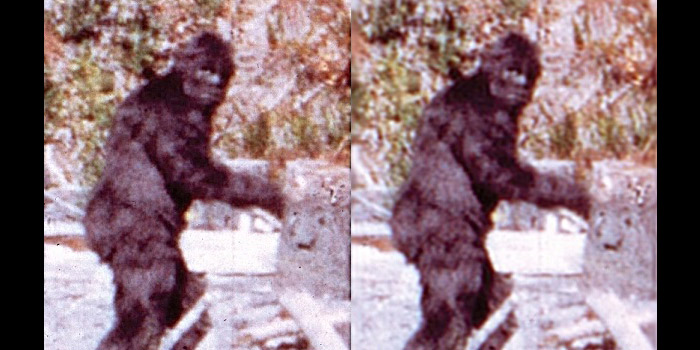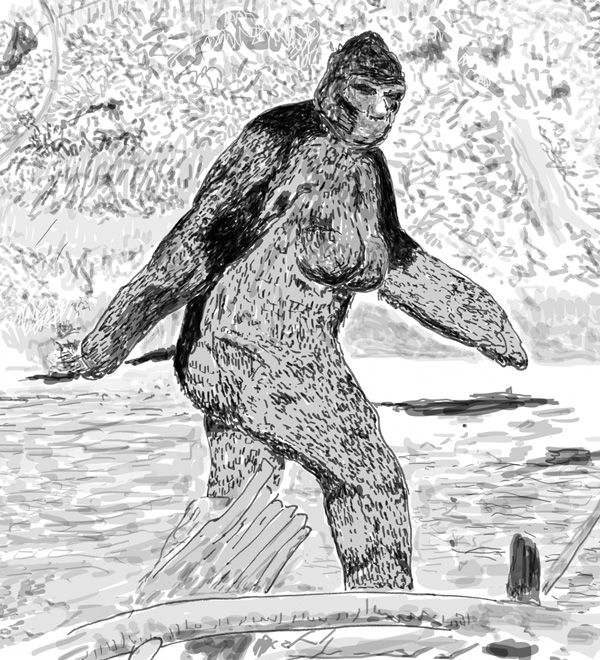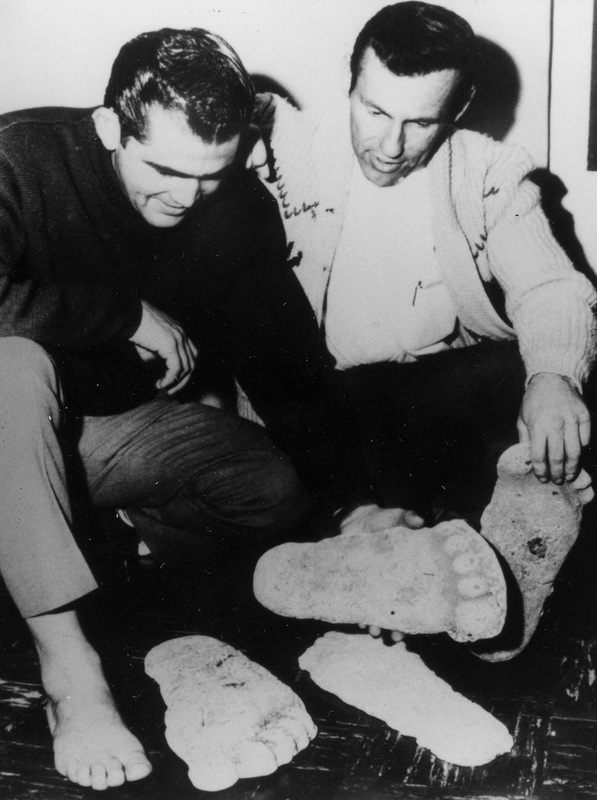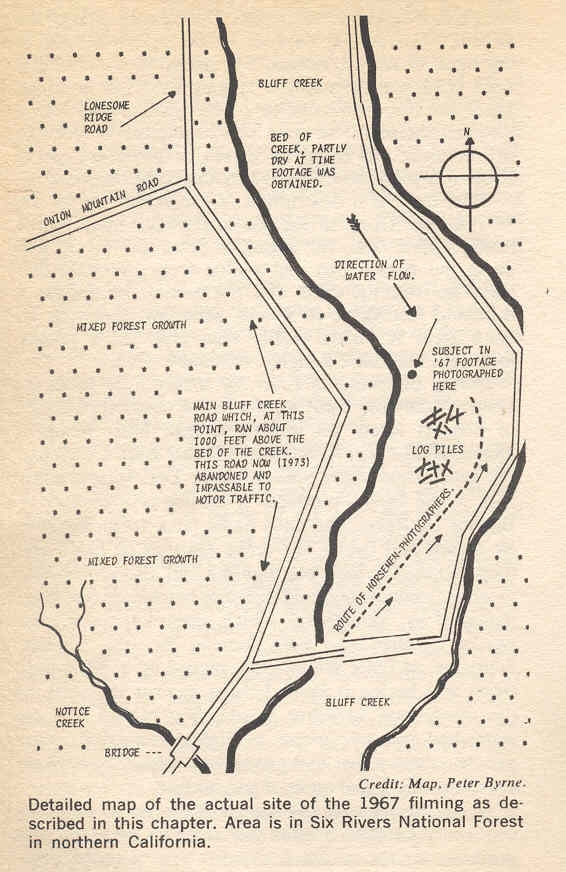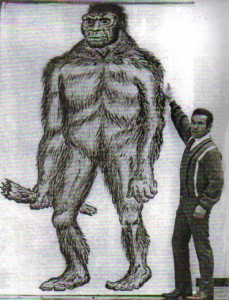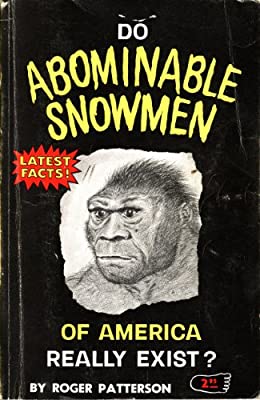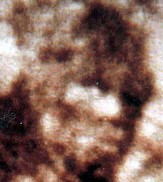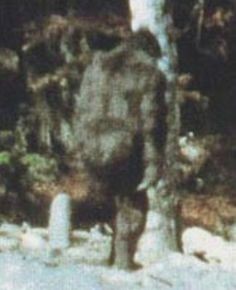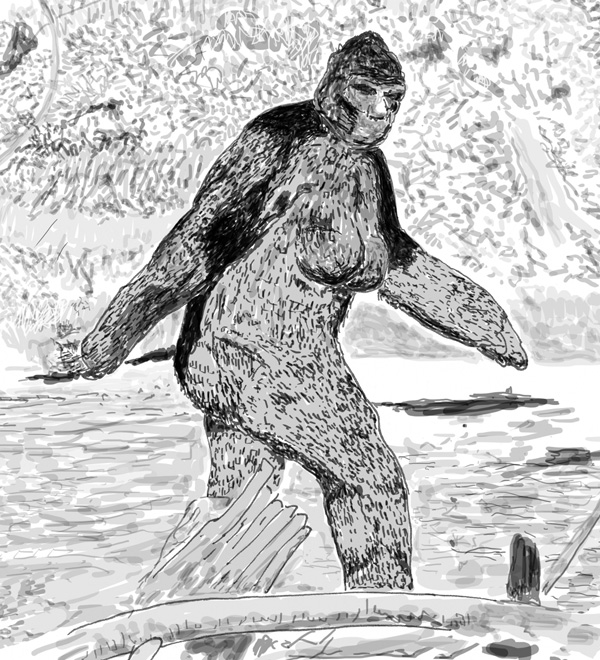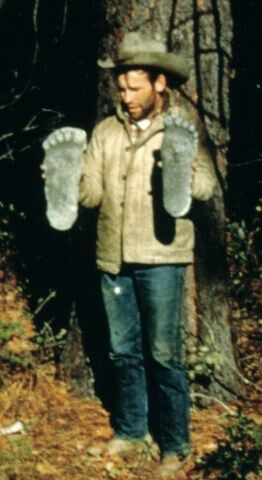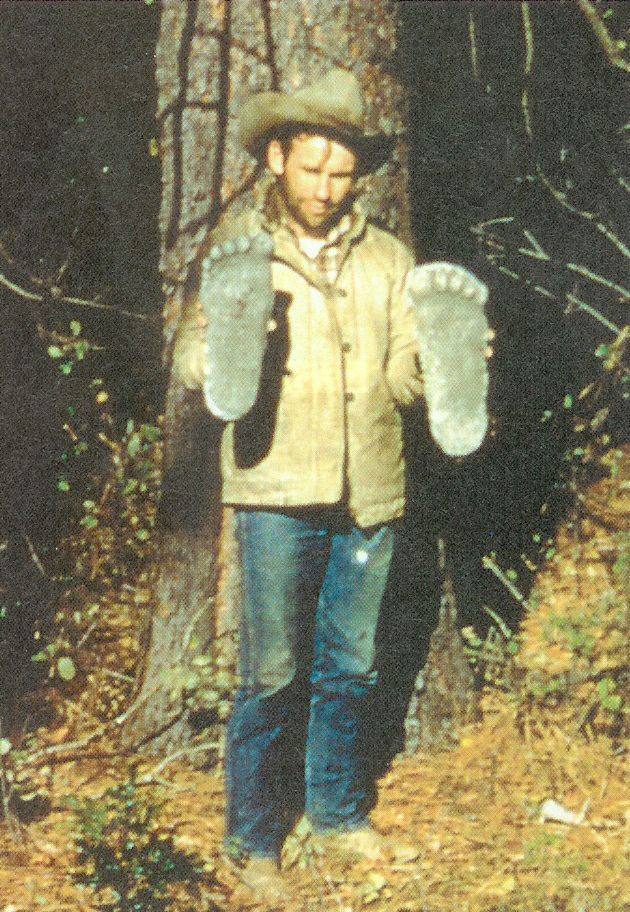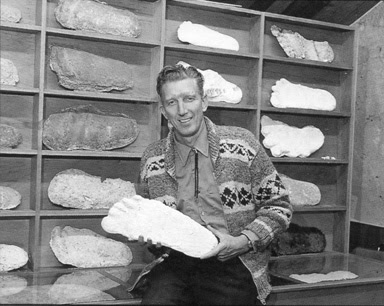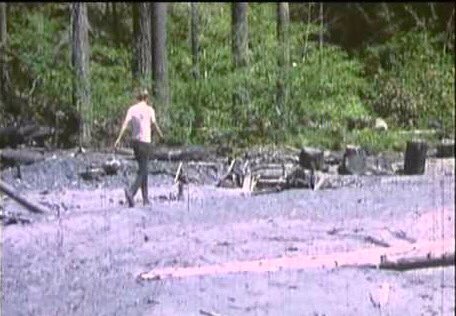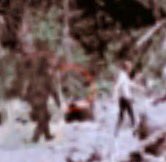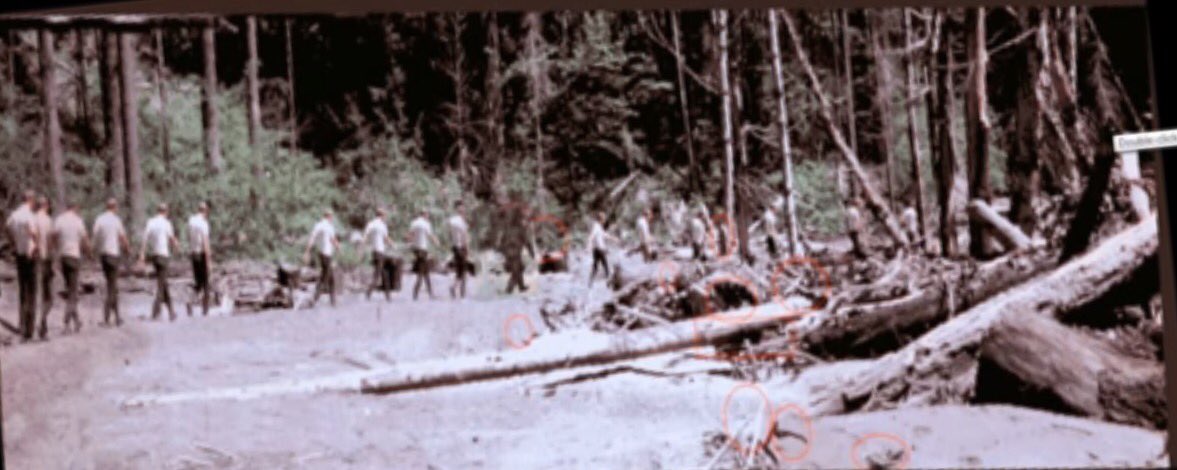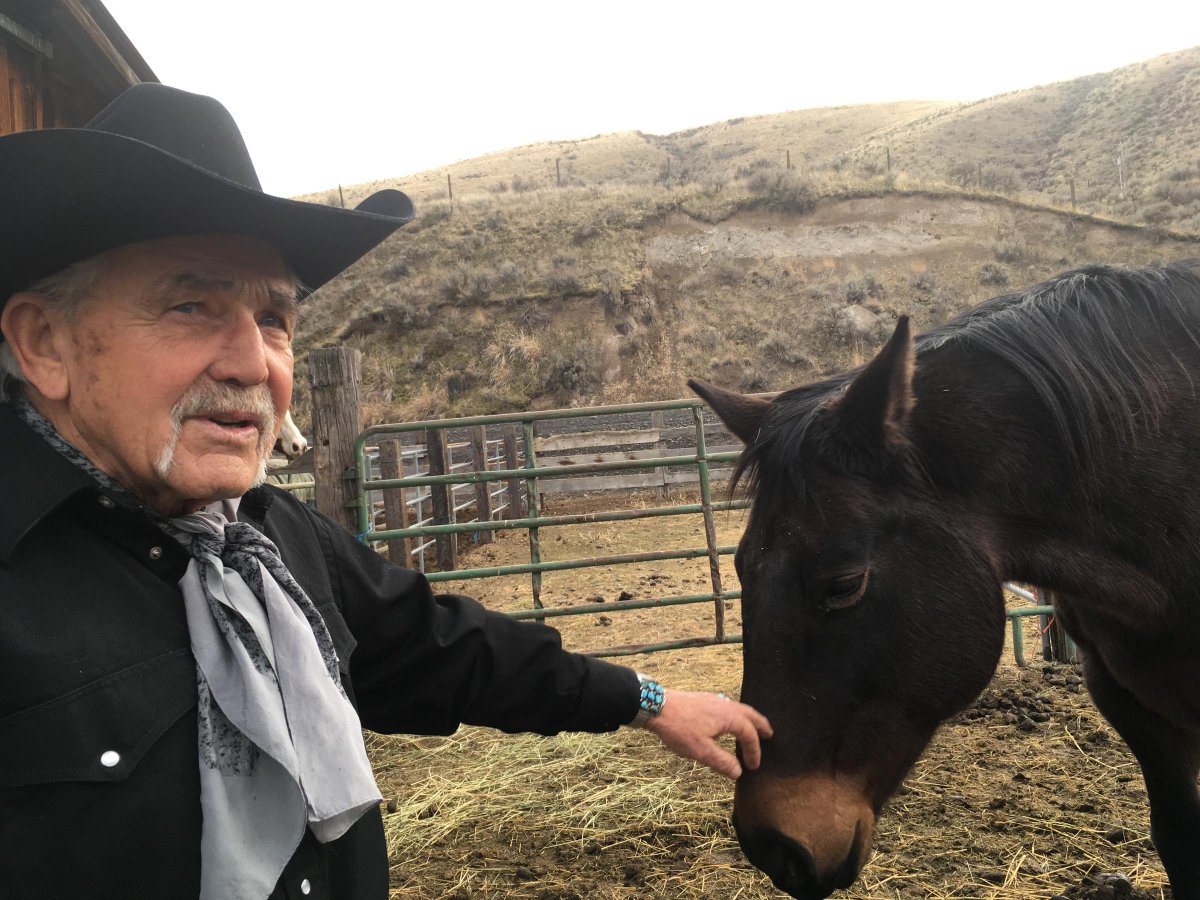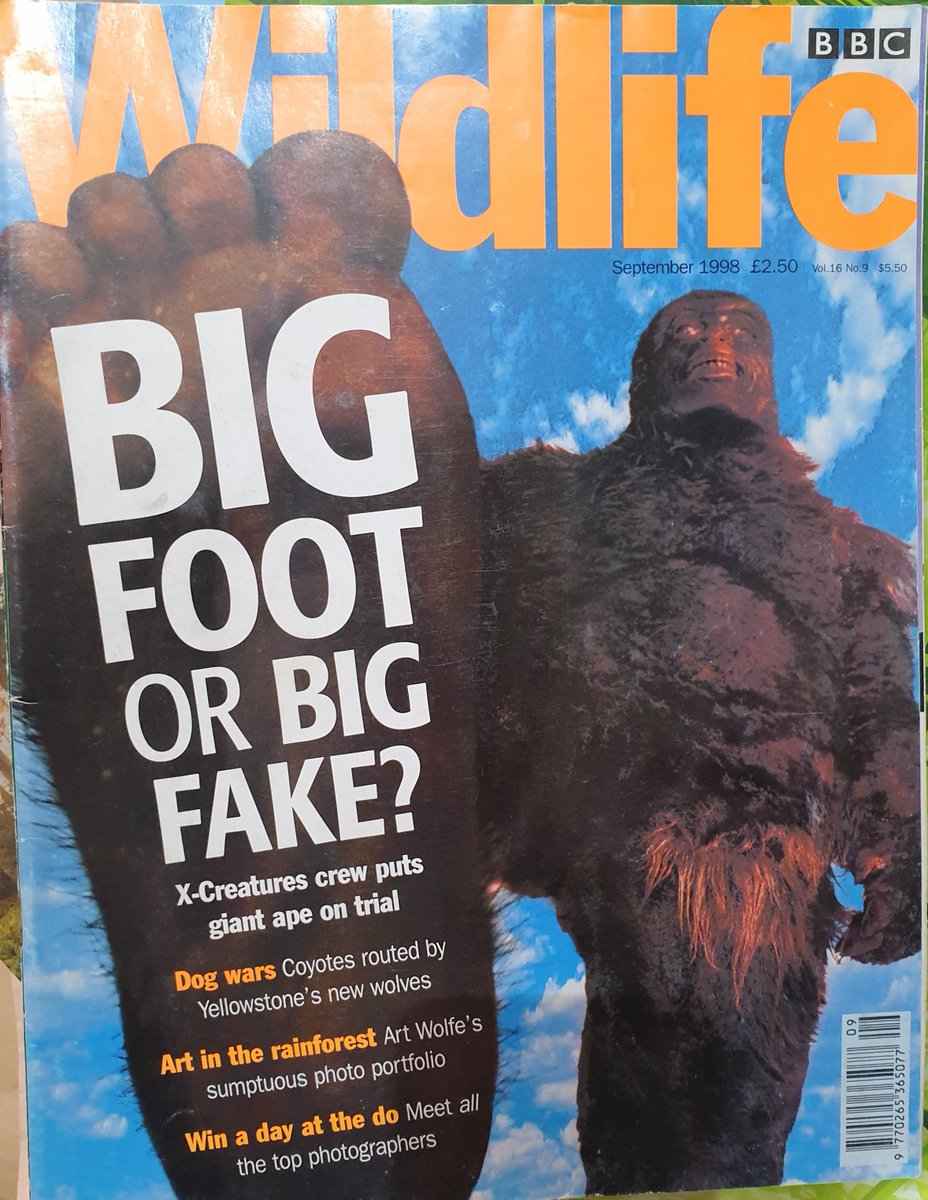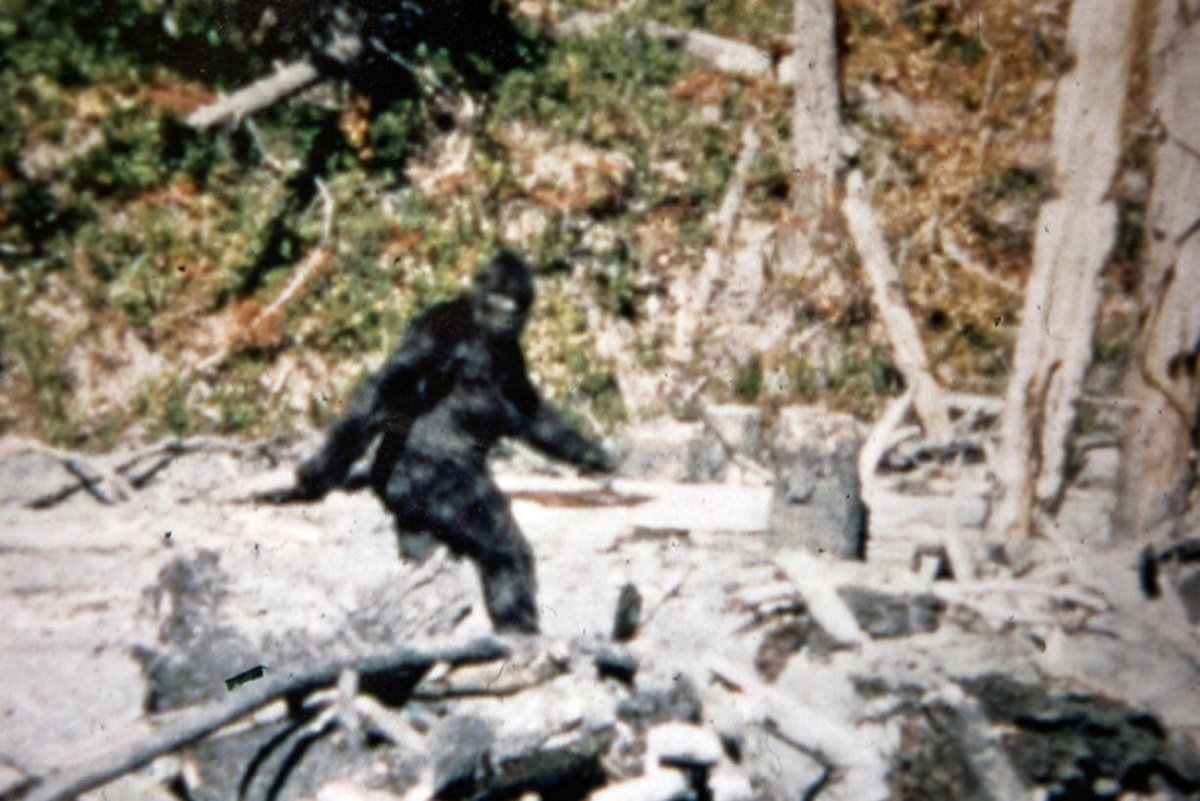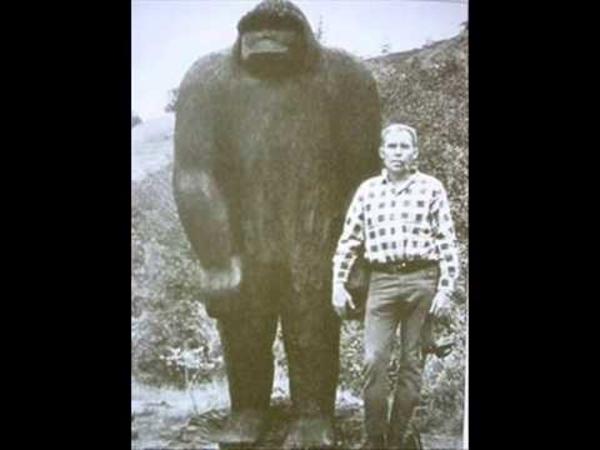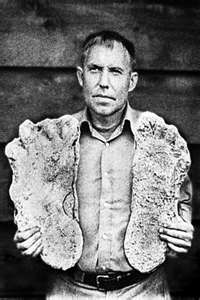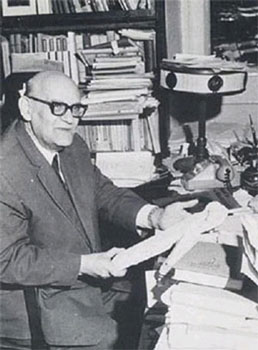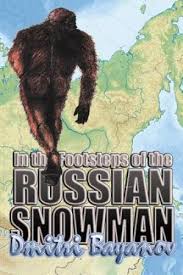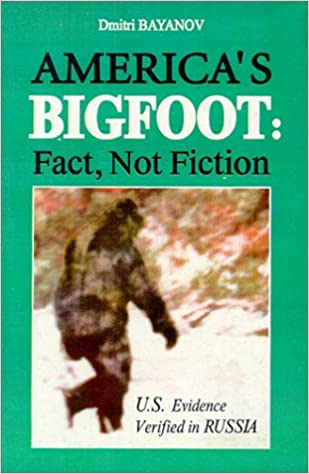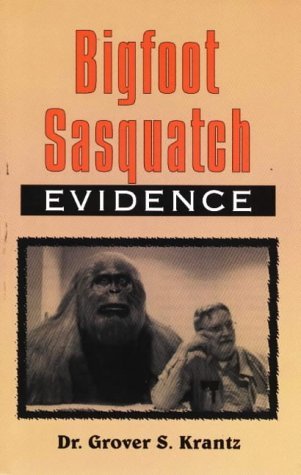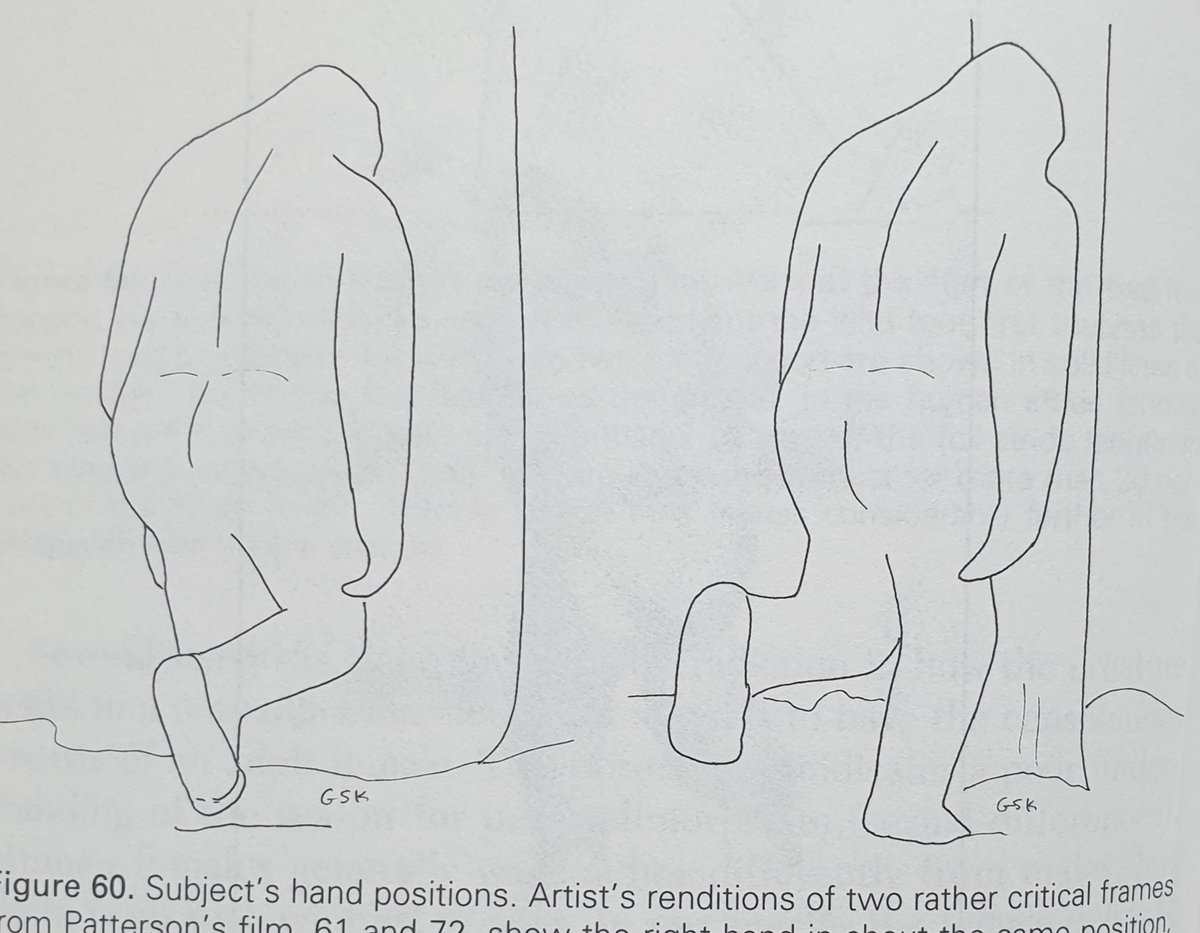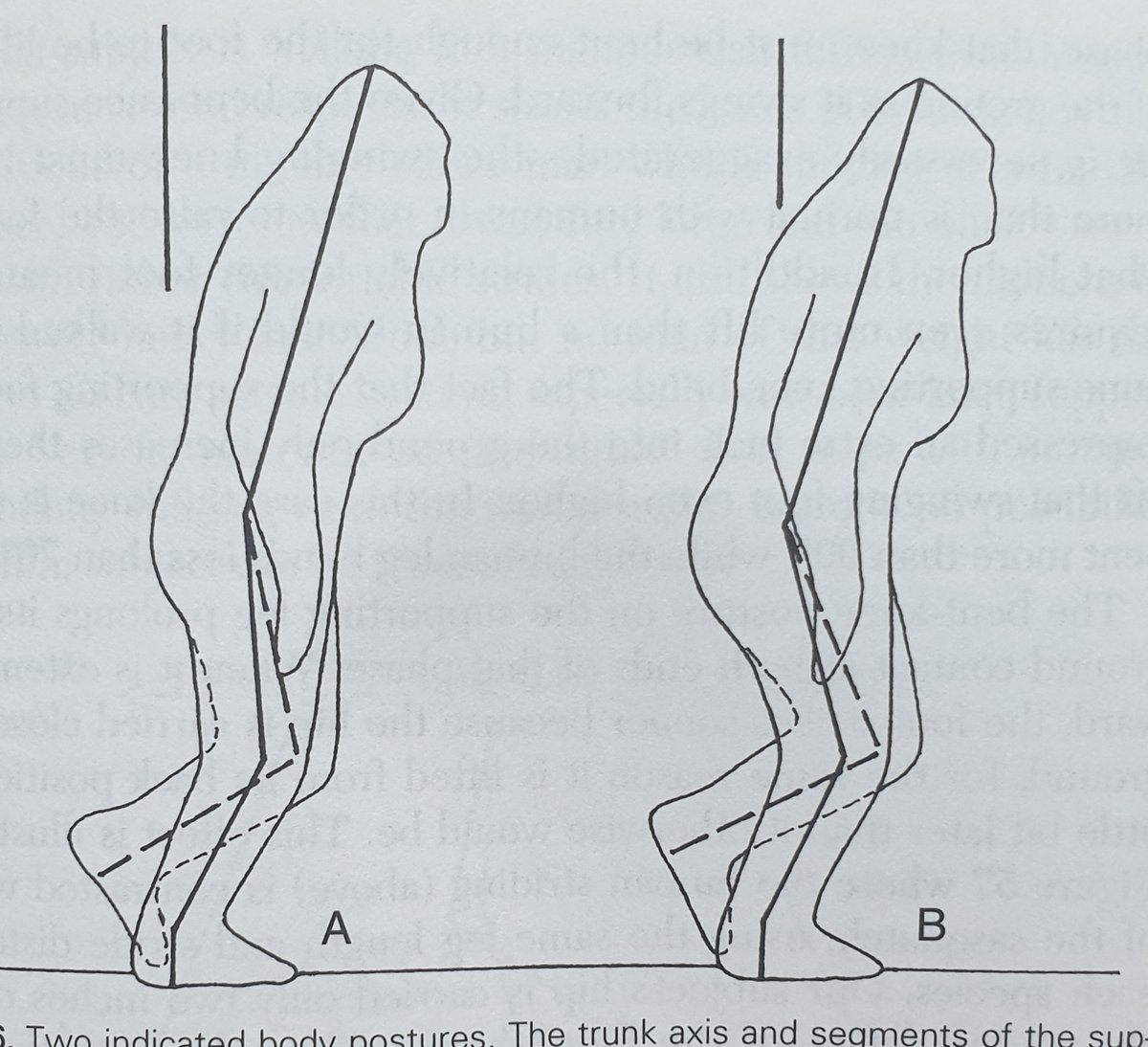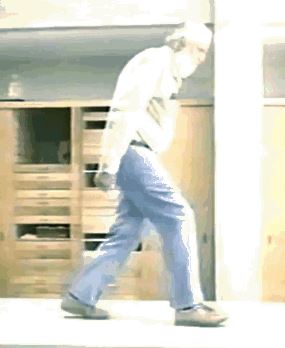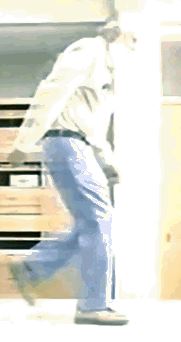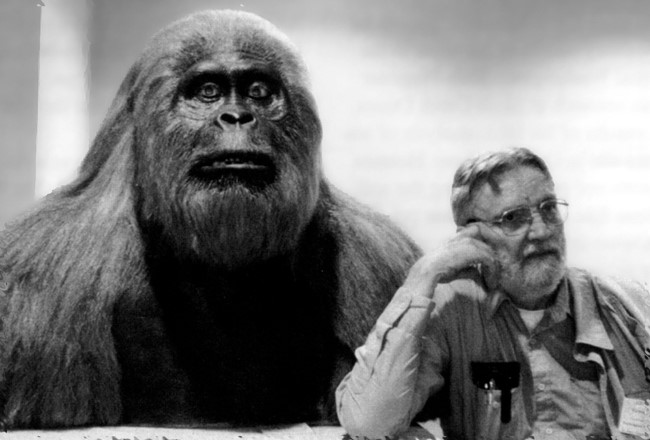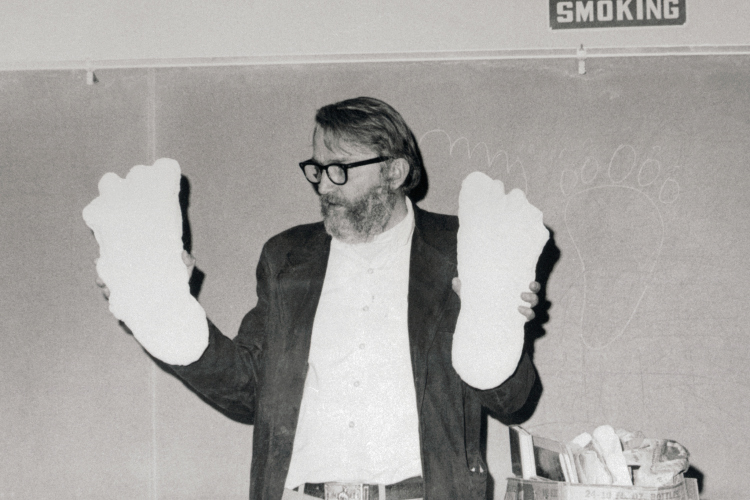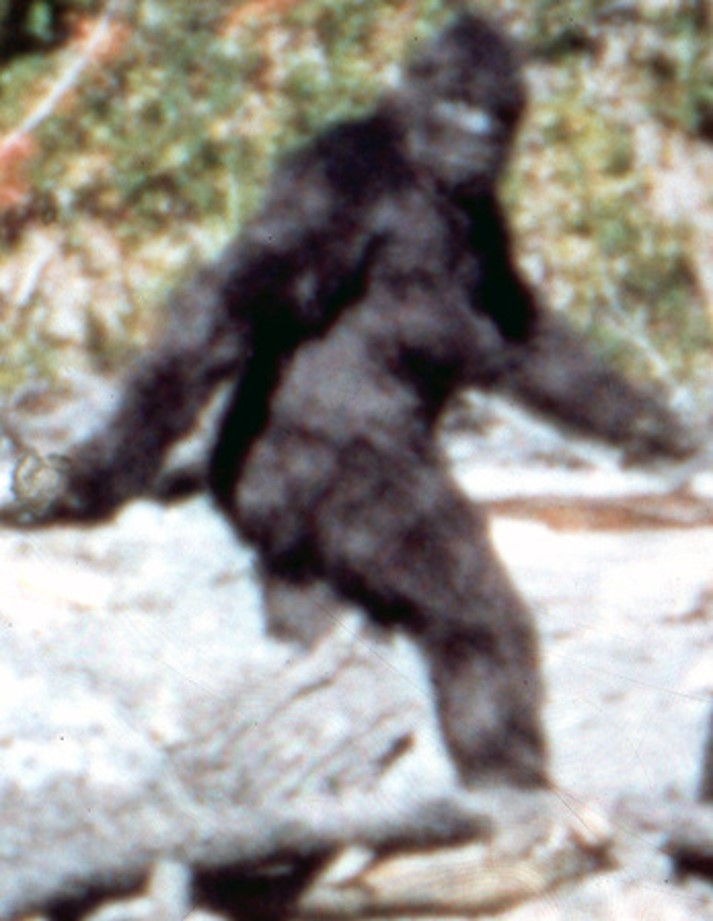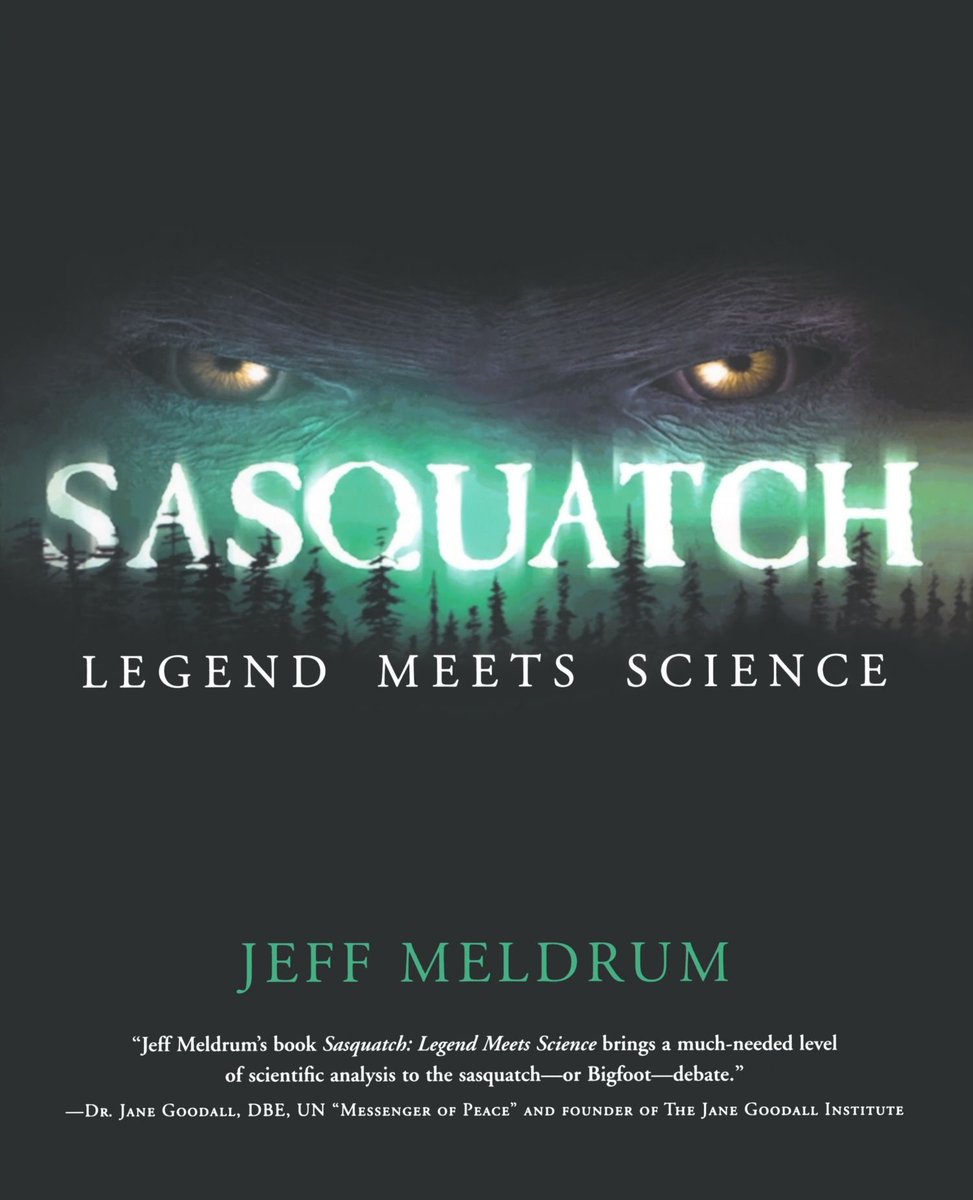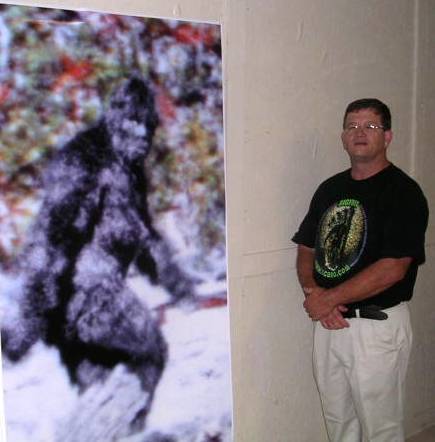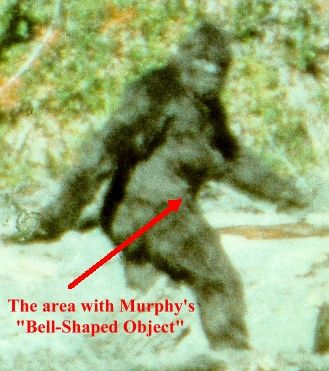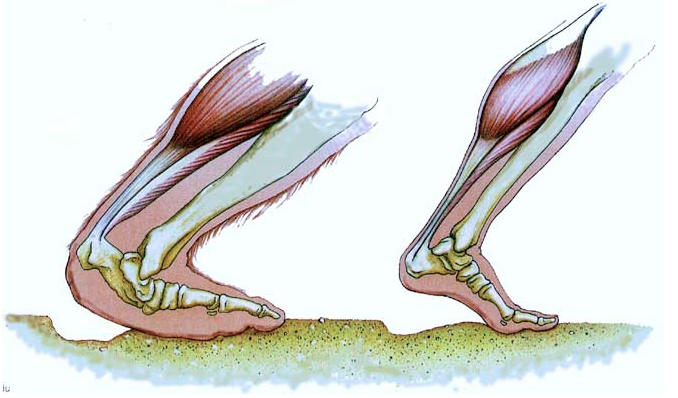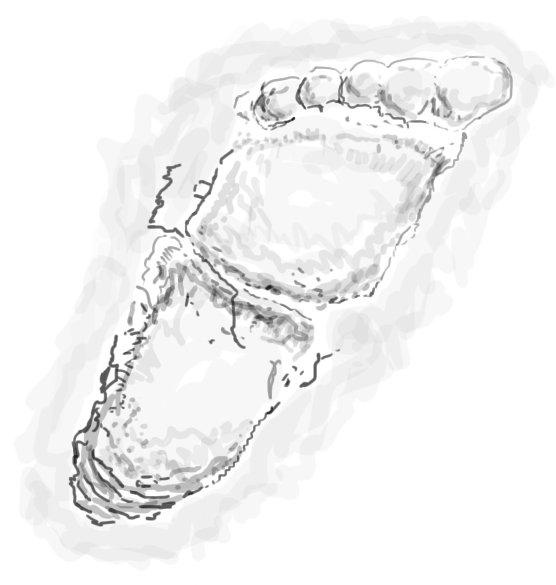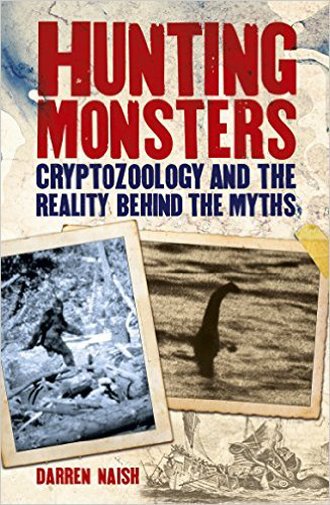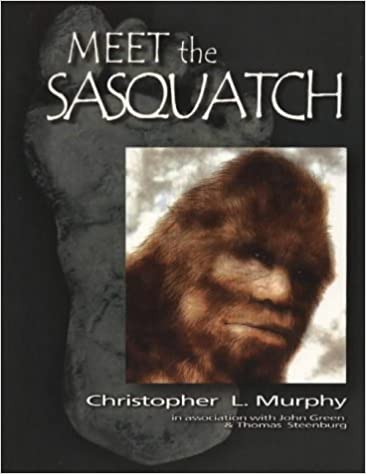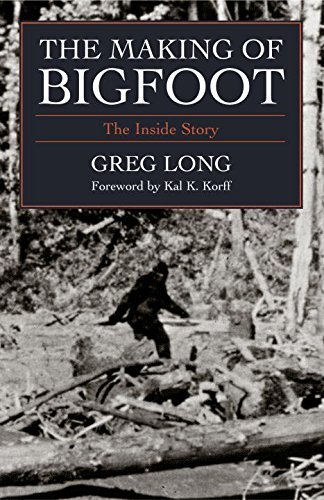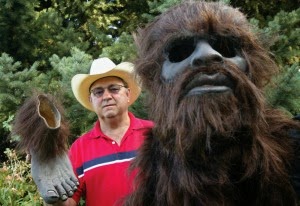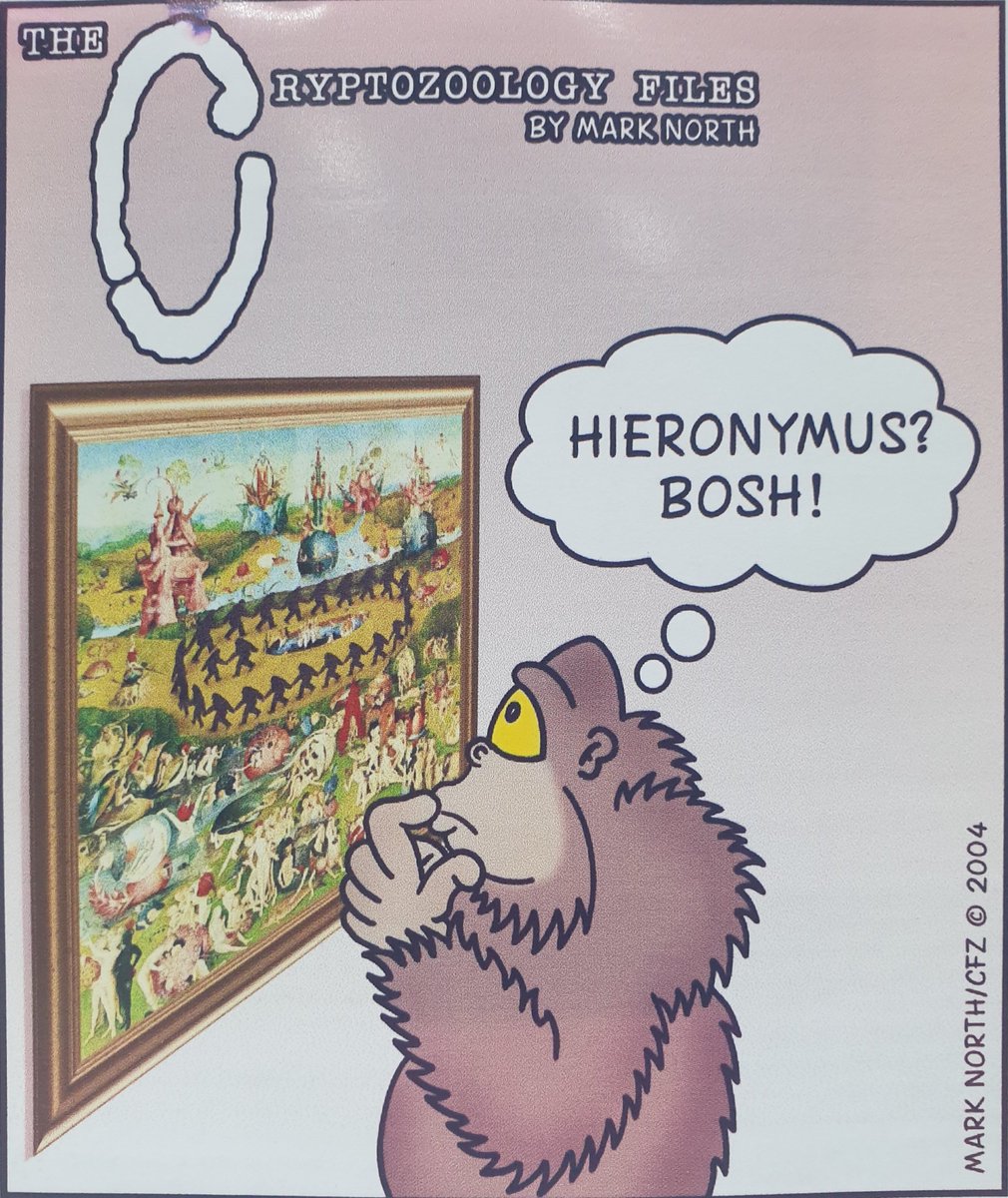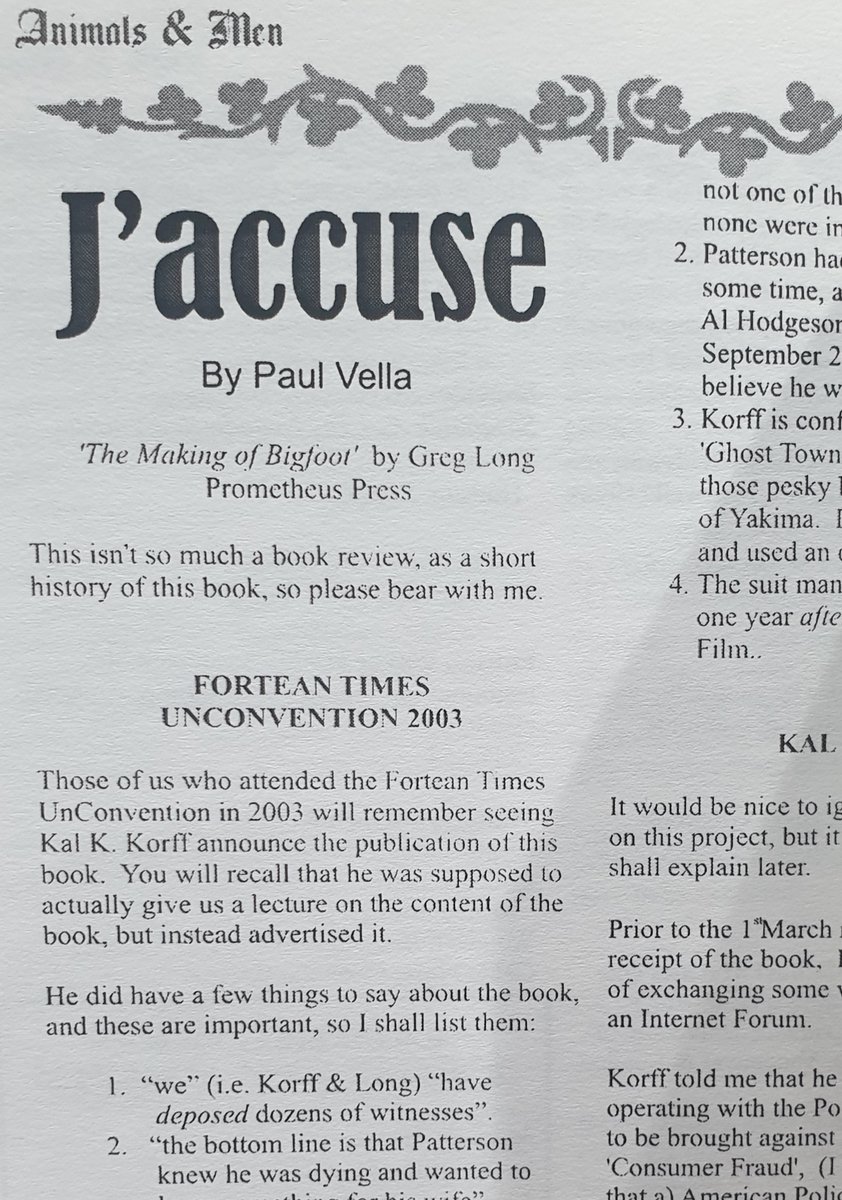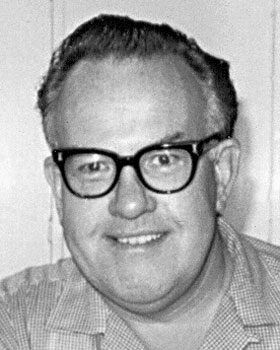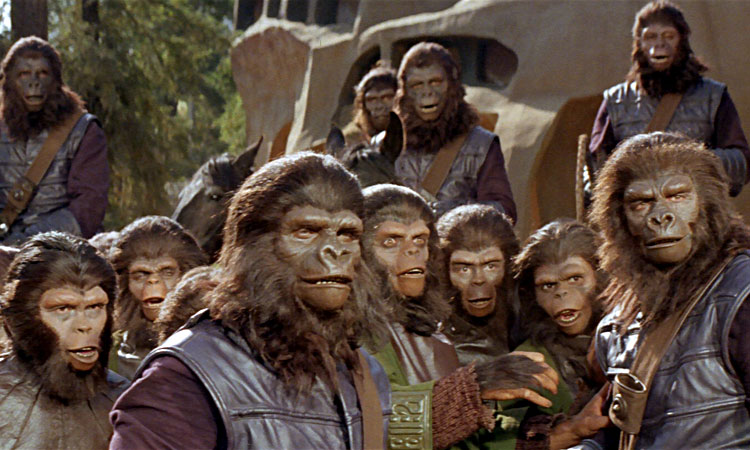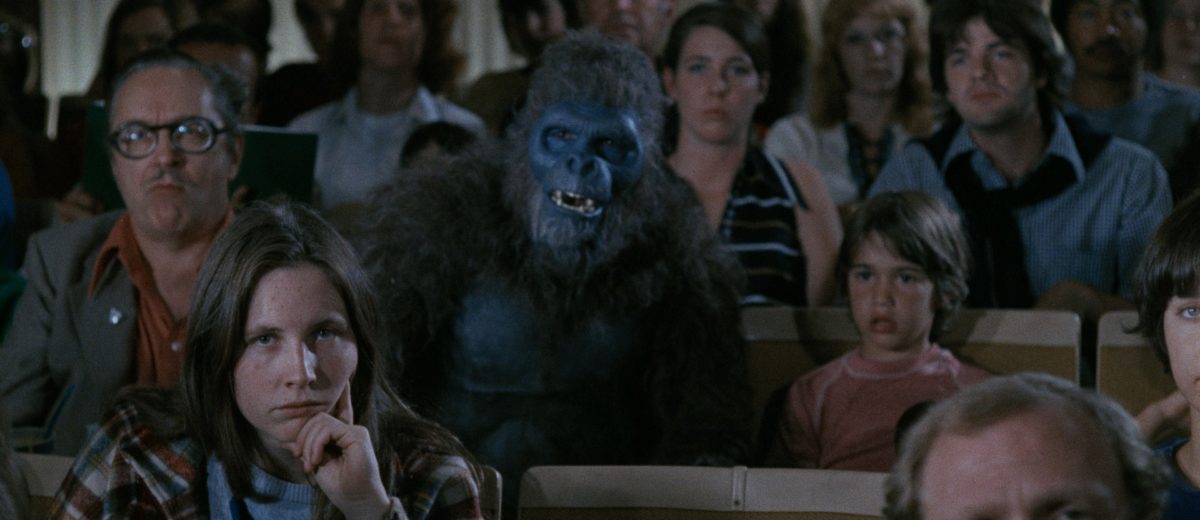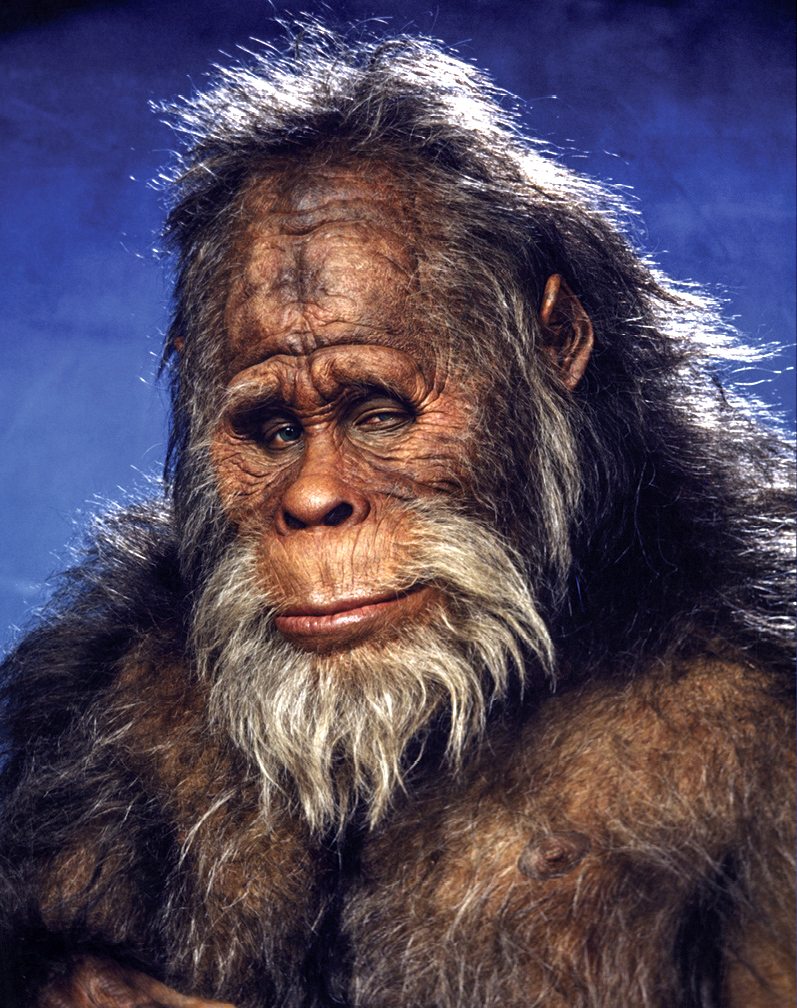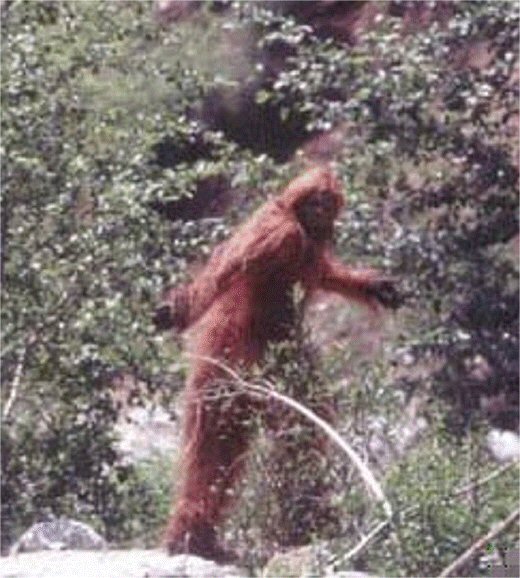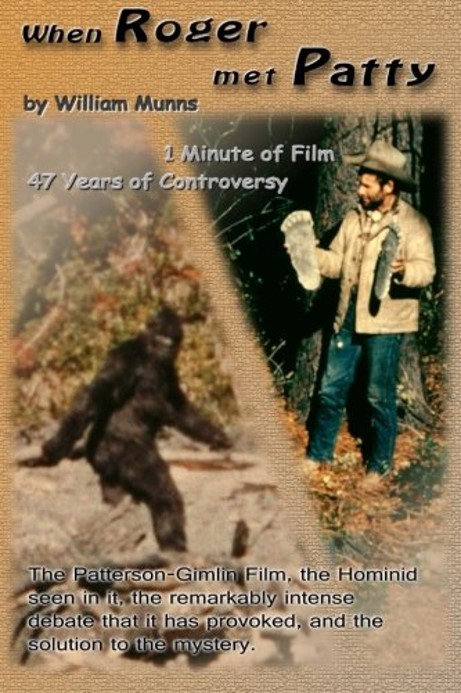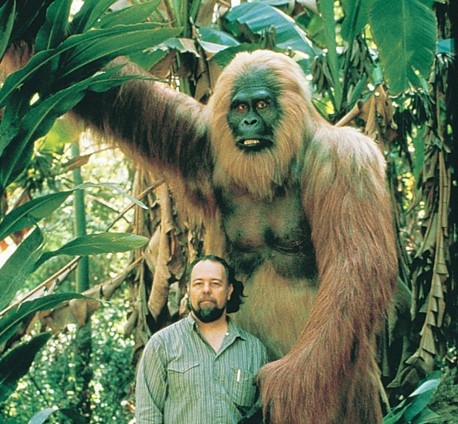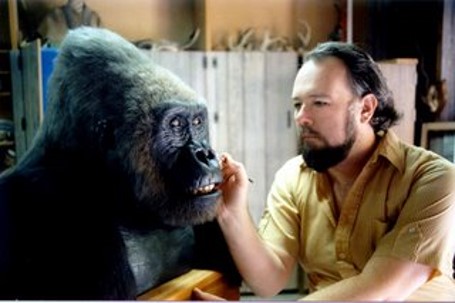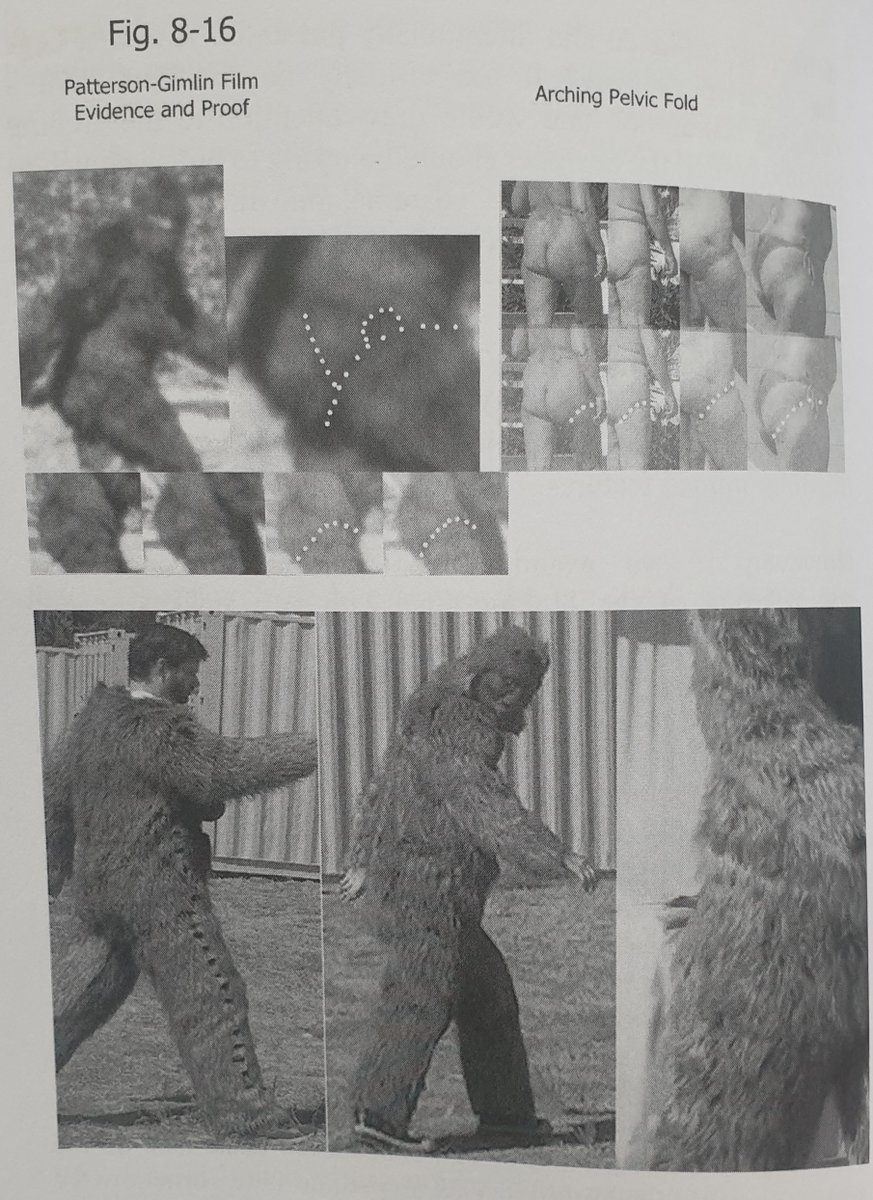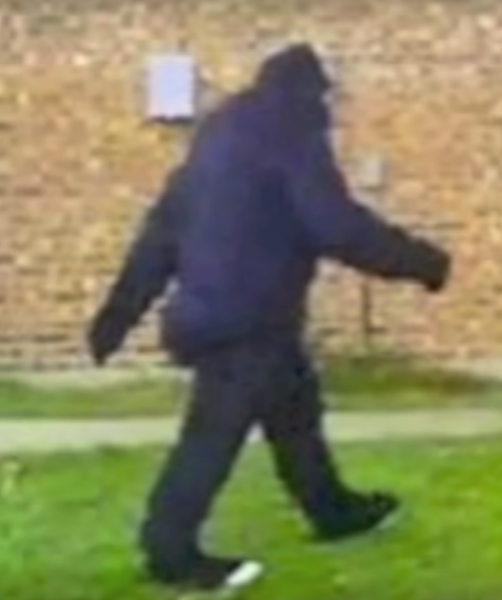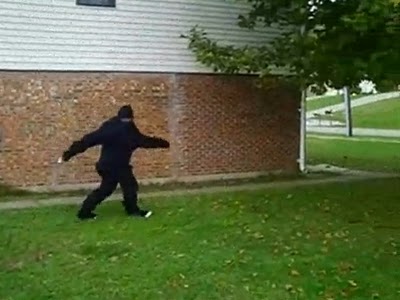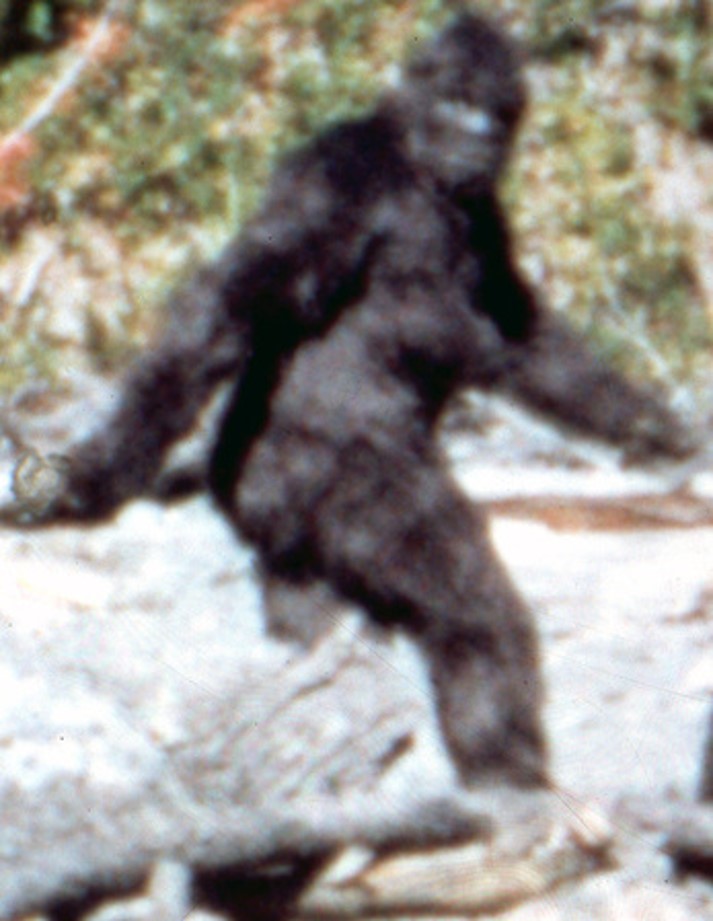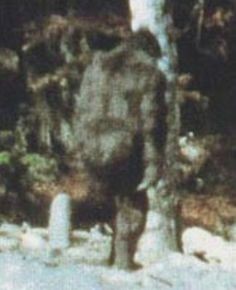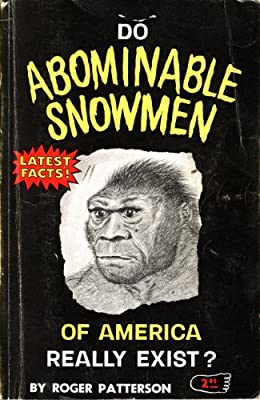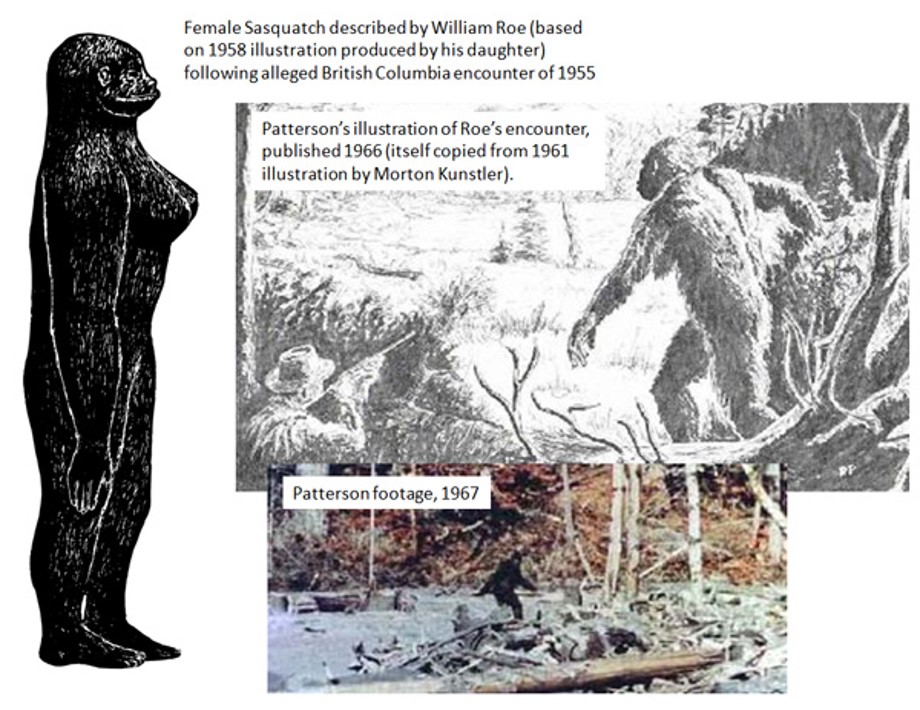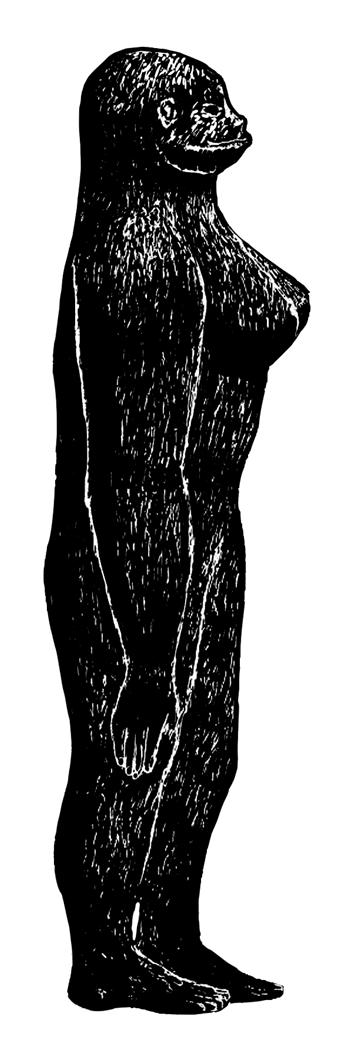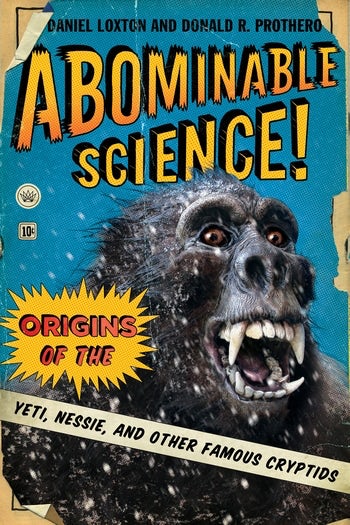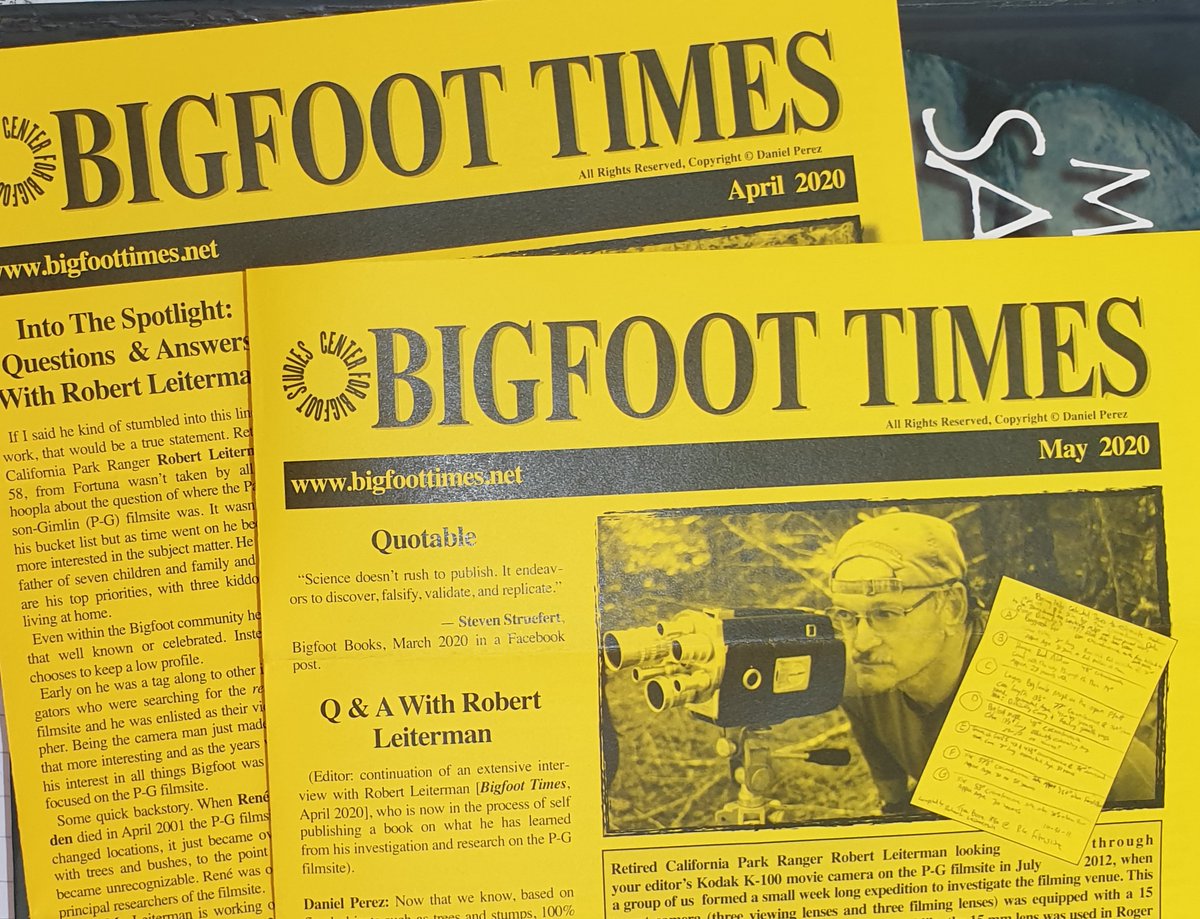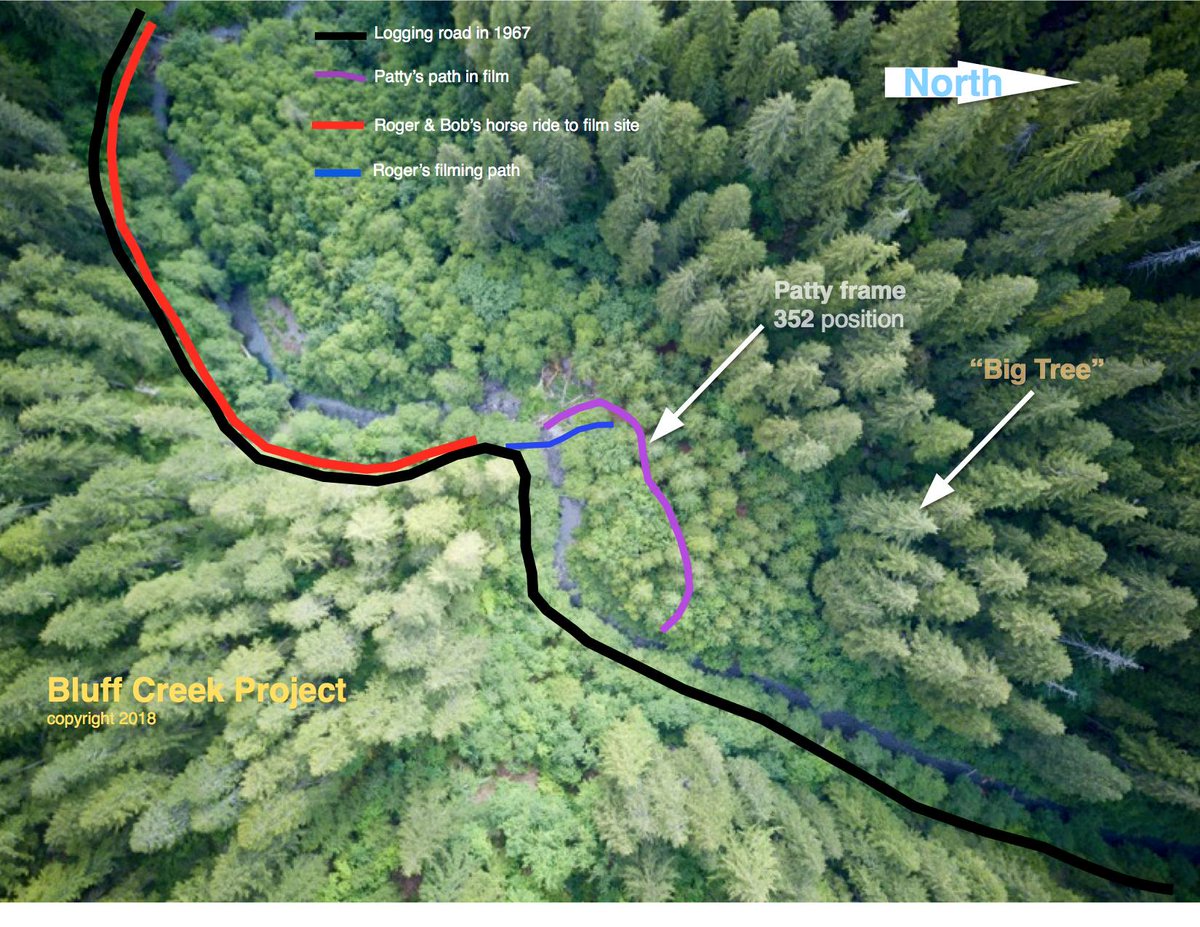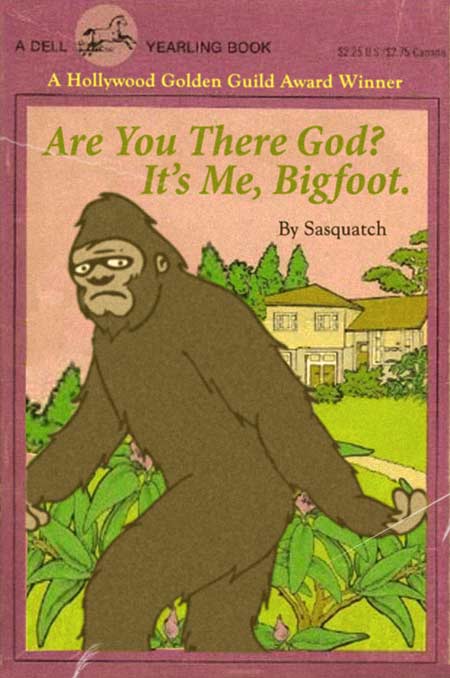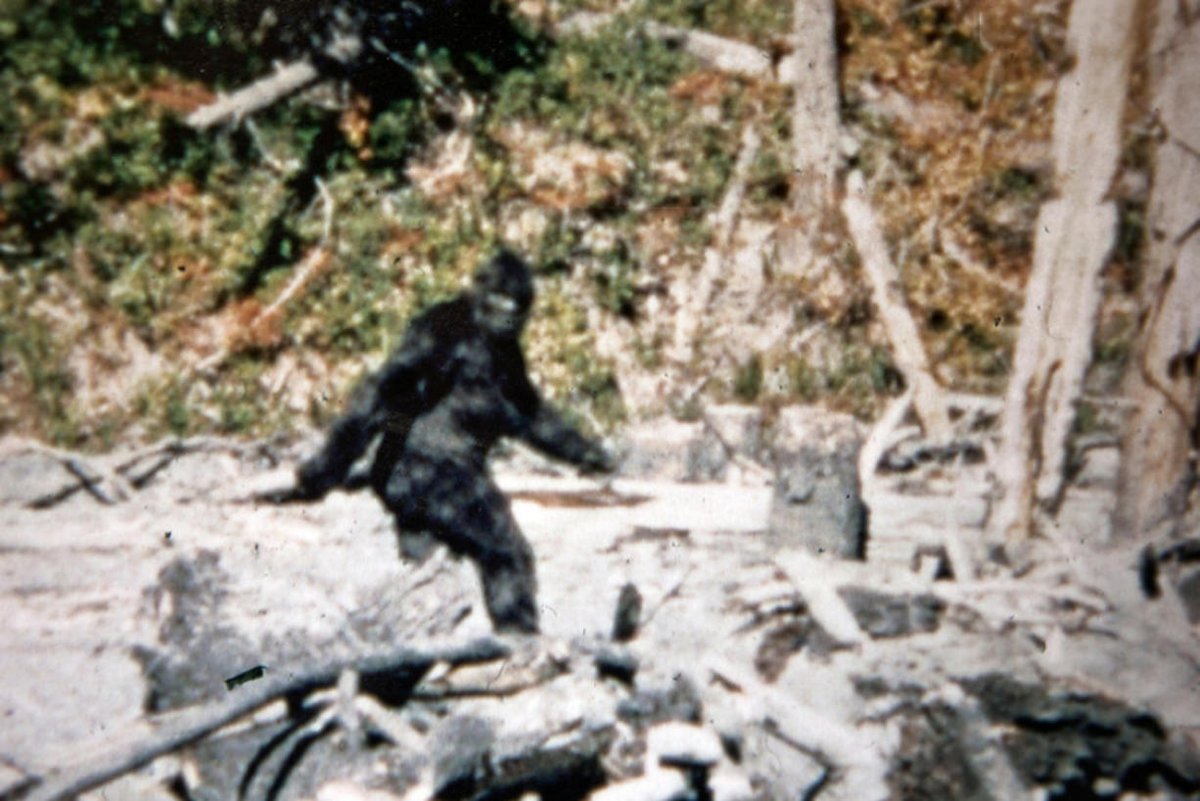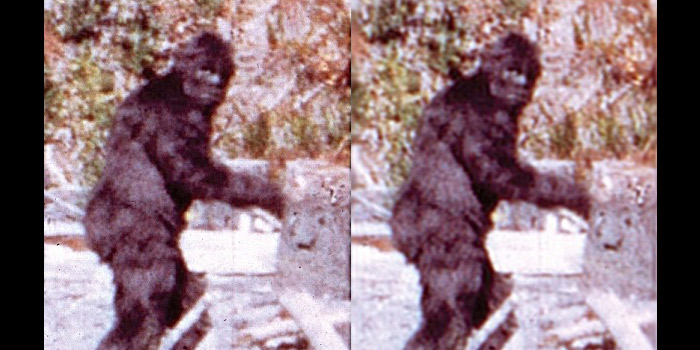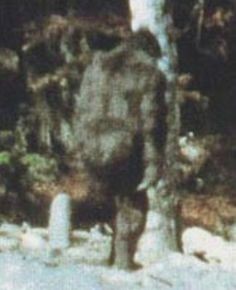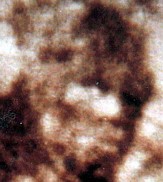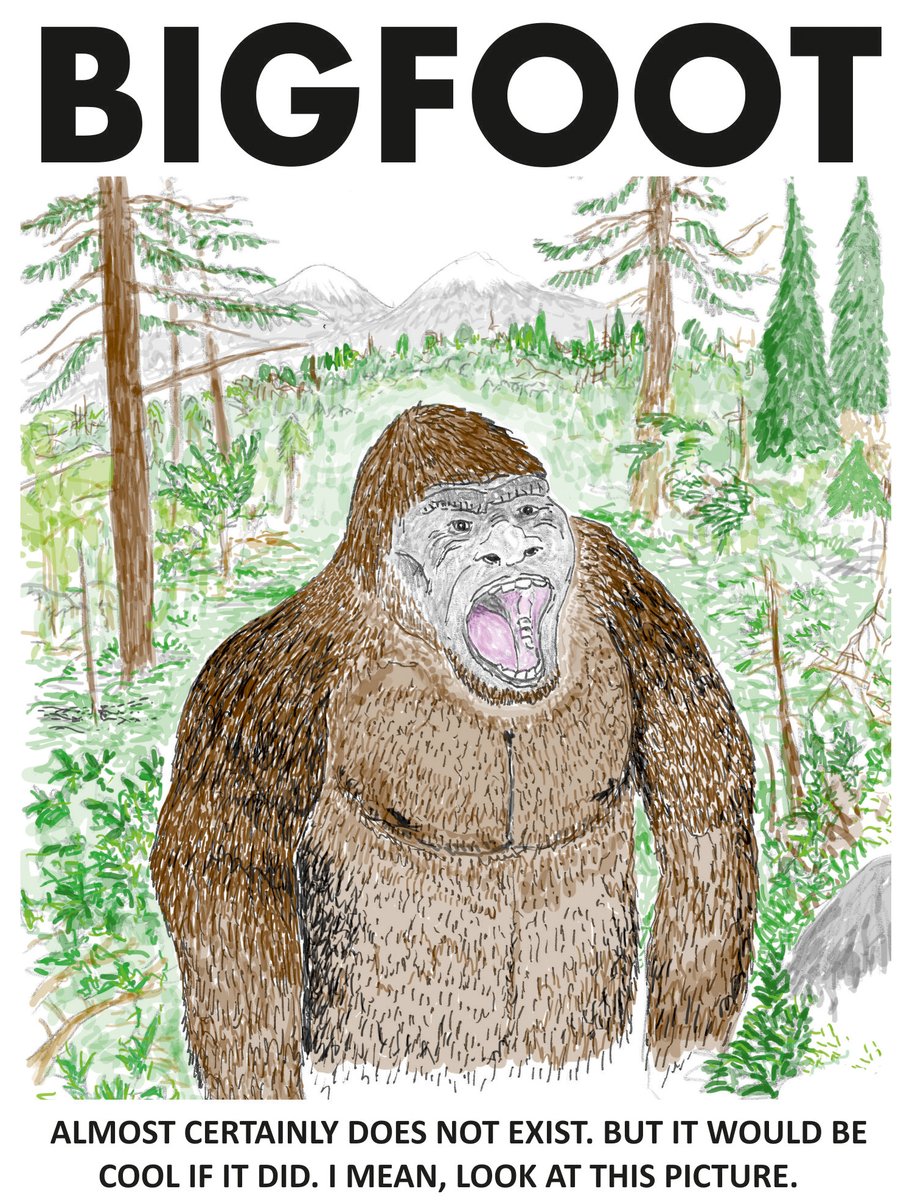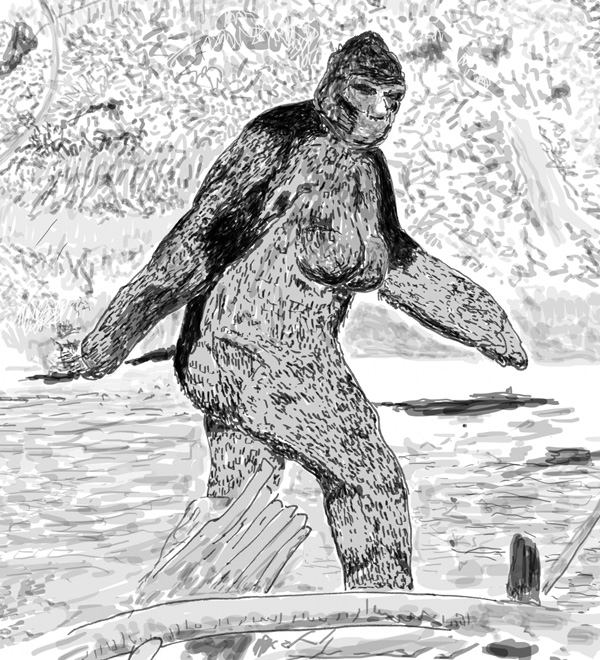If you liked my threads on sea monster and #LochNessMonster photos, you might enjoy this one, which focuses on something very different: the famous 1967 #Bigfoot film, variously dubbed the Patterson Film, Patterson-Gimlin Film, or Bluff Creek Film…
I’m going to be calling it the PGF (for Patterson-Gimlin Film). Some people say that it’s the most analysed piece of film footage after the 1963 Zapruder Film, showing JFK’s assassination...
The PGF is about 1 minute long and was filmed by the late Roger Patterson on 20th October 1967 (though hold that thought). Patterson was accompanied by his friend Bob Gimlin (here on the left).
My approach here is to write as someone who hopes that #Bigfoot might be real but is unconvinced by existing evidence and aims to treat all claims and evidence with fair scepticism. Spoiler...
.... I currently think that #Bigfoot is a sociological phenomenon, not a zoological one, and that the PGF is an excellent hoax. But I really, really want to be wrong on both of those contentions (and I’ve held different views in the past). See my book Hunting Monsters if you can.
If you see me present a point of view that you object to or think ridiculous, stick around and read the other tweets in the thread, because I’ll be discussing the opposing POV as well. Ok…
Supposedly, while deliberately looking for #Bigfoot (they were making a movie) at Bluff Creek, northern California, Patterson and Gimlin turned a bend and saw a female Bigfoot crouching (seemingly drinking) at the water’s edge.
Incidentally, Patterson and Gimlin weren’t just ‘two guys out in the woods’. By 1967, Patterson had a history of involvement with Bigfoot-related projects and had even written a book about them in 1966…
Their horses panicked and Patterson was thrown from his as it reared, but he managed to pull his camera from a saddlebag and begin filming…
The Bigfoot in the PGF – generally known today as ‘Patty’ – strides with bent knees and swinging arms, has a dark brown pelt, prominent breasts, and what looks like a conical head and grey facial skin...
Patty’s pelt appears to glisten and move like the real pelt of an animal, and there are contours and movements which look like genuine muscle movements.
Some people say that specific muscles (like the trapezius, deltoid and so on) are visible. Patty walks in an unusual way, with the neck bent down and forwards and the feet lifted so high that we see the soles of the feet perpendicular to the ground.
The feet appear to be flexible, since there’s what looks to be a flexible zone half-way along the sole.
At one point, Patty looks directly at the camera, giving us Frame 352, the most frequently reproduced part of the film. The PGF is bouncy, since Patterson was running to keep up (stabilised versions are available today though, more on those later), and...
... ends as Patty enters the woods, shortly before the film reel ran out…
Patterson and Gimlin described how they followed the creature’s path, observed and filmed its footprints and made plaster casts of both feet. They then departed to Eureka, shipped the film for processing, and contacted a newspaper (Eureka’s The Times Standard) with the story.
News spread among interested parties. Bob Titmus (one of many character in 1960s Bigfoot research) visited the site and claimed he could track Patty’s movements precisely. He came up with measurements and also said that Patty had hidden in the woods after disappearing from view.
Titmus didn’t take a tape measure with him though (!), and his claims about tracking are dubious given a massive downpour which had happened since the filming occurred...
Jim McClarin and John Green (one of the ‘Four Horsemen of Sasquatchery’) also visited the site. McClarin was 6ft 5in so Green filmed him in the same spots as Patty, aiming to line them up and determine Patty’s size. Green concluded from this that Patty was close to 7ft tall…
But he later revised this down to less than 6ft 5in. In more recent years, M. K. Davis has combined Green’s footage of McClarin with the PGF. This seems to show that Patty is shorter than McClarin.
Patterson died of cancer in 1972 (he was just 39) and is said to have maintained the authenticity of the film right up to the end. Gimlin is still around and – after years of near-silence and of staying out of the Bigfoot scene – is today pretty active in the community...
... often showing up at conferences and meetings and appearing on podcast interviews and the like. 89 years old, he honestly seems like the nicest guy and has a great many fascinating tales about his life.
If #Bigfoot isn’t real, the PGF is a hoax. This is the starting point for many academics, and was the official position taken by the Smithsonian when their experts were shown the footage in December 1967.
An earlier screening at the University of British Columbia in October 1967 also led the scientists present to provide negative critique, though the comments concerned were naïve and clearly made on the spot.
The most popular take – reproduced in several influential TV shows and in many books and articles – is that the PGF is surely a hoax. More on this in a minute…
For the majority of Bigfoot believers and advocates, the film is genuine, and one of the best pieces of evidence there is. We’ll come back to this too…
One argument against the idea that the PGF was hoaxed is that Patterson spent time, effort and money post-1967 in trying to find more evidence. Gimlin has also consistently (so far as I know) supported the film’s authenticity, and...
... efforts to doorstep him and get him to say that it was a hoax (looking at you, BBC’s 1998 The X Creatures series) didn’t provide anything novel or revealing.
The experts at the Smithsonian – most notably, primatologist John Napier – might have publicly declared the film to be hoax, but it was taken as depicting a real unknown animal by Ivan Sanderson, who published an article on it in the Feb’ 1968 issue of Argosy magazine.
Sanderson is a problematic figure. Books could be written on his travels and adventures, but he was first and foremost a populariser, and his attempts to popularise (and, dare I say, profit from) phenomena like #Bigfoot damaged their credibility more than strengthened them.
In the Argosy article, for example, he refers to the supposed Bigfoot as the ‘Adorable Woodswoman’, ‘lady’ and ‘Mrs Bigfoot’. Anyway…
Rights to the PGF were purchased by René Dahinden, an interesting character (he died in 2001) and another of the ‘Four Horsemen’. Or at least… _Canadian_ rights were purchased by Dahinden in conjunction with Green (the legal story of the film is complex and I’ll avoid it here)…
Dahinden, unhappy with the film’s reception in N America (I believe it was also shown to experts in New York), arranged for it to be shown in Russia where an active community of academics, mostly convinced of the reality of wildman-type creatures in Eurasia, were interested.
The approach of these researchers – they include Boris Porchnev (shown here in the b&w photo) and Dmitri Bayanov (who died in June 2020) – is interesting. They maintained a distinct Russian tradition of Wildman research which accepts and supports the reality of these creatures…
… and they were essentially convinced by the PGF’s reality, immediately claiming that it revealed an anatomical structure and gait which cannot be reproduced by humans. Bayanov’s 1997 book America’s Bigfoot: Fact, Not Fiction documents the positive Russian response to the PGF.
One of the few N American academics who thought the PGF was real was Washington State anthropologist Grover Krantz, another of the Four Horsemen (also no longer with us, he died in 2002).
In his 1992 book Big Footprints: A Scientific Inquiry Into the Reality of Sasquatch (republished in 1999 as Bigfoot Sasquatch Evidence), Krantz presented a long evaluation of the PGF.
Of interest is that Krantz couldn’t get permission to use images from the actual footage (due to bad relations with Dahinden), and thus had to rely on hand-drawn diagrams.
Krantz argued that the subject of the film is too large (too wide, literally too massive around the thorax) to be a person, and he used measurements from a range of people to back this up (the image with measurements, shown here, is by Green).
David Deagling and Daniel Schmitt later contested this, their argument being that the dimensions of the subject are – contra Krantz – within the range of human variation. And their contention was itself contested...
... this time by Jeff Meldrum, a qualified primatologist with a serious interest in Bigfoot; more on him later.
As a non-specialist it’s difficult to know who to ‘trust’ here, but claims that Patty is out of the human range of variation rely in part on the idea that we know precisely how far Patty was from the camera, which we surely don’t (read on)…
… and that the dimensions of Patty’s thorax have to correspond to ribcage dimensions… whereas, if this is a hoax (a person in a suit of some sort), we might expect Patty’s outer edges to exceed those of a human wearer.
Krantz also argued that the bent-knee, so-called compliant, gait of Patty is non-human and even that it can’t be replicated by humans. Having participated in recreation attempts many times, I agree that Patty’s gait is difficult for a person to replicate. BUT...
... it’s not impossible, the key thing is being consistent in step style and step height (which is hard)…
It’s also often been said that Patty’s arms are proportionally very long. A ‘sceptical’ effort to explain this is to suggest that ‘arm extensions’ were worn by the person in the suit, a count against this being that we seemingly see Patty move ‘her’ hands at a few points. And…
Are the arms _actually_ all that long? Humans are very variable in arm length, some people have arms sufficiently long that their fingertips are level with the knee when the knees are bent. My conclusion at the moment is that Patty’s arms totally fit human proportions.
Krantz also argued that the speed at which the film was recorded made a difference to its authenticity, though he was far from the only researcher to point this out. The camera Patterson used could film at 16 frames per second (FPS), and at 24FPS as well.
Krantz argued that 16FPS could be ruled out. Biomechanist Donald W. Grieve had earlier made the point that 16FPS looked unlikely, mostly because it makes the step cycle and arm swing look too fast given the size of the subject. 18FPS was most likely the real filming speed.
It turns out that the camera which Patterson used (a CineKodak K-100 16mm) actually filmed at 18FPS when set at ‘16’. There’s been a substantial discussion of what this means for the film, since they make a different for walking speed of the subject.
Krantz said a whole lot more on PGF, and on Bigfoot in general, and in fact essentially staked his career on the authenticity of #Bigfoot. Perhaps for this reason, he was passed several promotions he might have had, and...
... it could be argued that his career dead-ended as a consequence. Then again, you don’t have to declare interest in #Bigfoot for this to happen in academia.
An excellent analysis of Krantz and the backstory to his work and ideas on Bigfoot were provided by @tarbosaur in Searching for Sasquatch: Crackpots and Eggheads. Those terms are not deliberate insults, but were used by Dahinden in his description of Bigfoot researchers..
However, his arguments have been repeated more recently by primatologist Jeff Meldrum who argues (in, for example, his 2006 book Sasquatch: Legend Meets Science) that Patty’s anatomy and gait is only consistent with her being a giant, compliant-walking non-human…
Meldrum has drawn attention to statements made by several biomechanists and anatomists who’ve said very positive things about the film (see pp. 174-77 of his book).
For all the cries of Patty being obviously fake or staged or phoney, it’s at least interesting to note that there have always been some number of scientists who’ve said how aspects of the PGF look plausible or even genuine.
All ‘early’ (pre-2009-ish) viewings of the film were based on the very jerky original (or copies of it). Patterson’s running means that it’s really hard to focus on Patty.
Modern technology has resolved this problem. In 2009 (or earlier, I can’t pin down a date), researcher MK Davis produced a stabilised version which allows us to see Patty with greater clarity and stability...
Numerous details now became visible, in fact Davis printed out a life-sized version of Patty, which looks pretty impressive…
A result is that Davis has been a bit of hero in the Bigfoot research community. However…
In 2008 Davis made the amazing claim that he’d discovered evidence for a ‘massacre’ at Bluff Creek. This idea, by the way, didn’t originate with Davis, but had been kicking around for some years beforehand by others in the community.
According to Davis -- supposedly, the PGF and film taken afterwards at the site revealed how Patterson and Gimlin had discovered a whole #Bigfoot family and slaughtered them, leaving bloody pools, patches of skin and so on…
There followed a fairly extraordinary series of to-ings and fro-ings whereby most in the #Bigfoot research community rejected Davis’s claims and stated that they would ‘stand with Bob’ (as in: Bob Gimlin). If you look at the ‘evidence’ for a massacre, it’s pareidolia.
In fact Davis apparently claimed in 2008 (at a conference) that the PGF shows Patty to have braids and a top-knot and ponytail, and to be holding a stick. Again, I think we can be confident that all of this is pareidolia, and...
... it’s concerning when researchers make claims like this: if you’re gonna say something this surprising, your evidence must be good enough to convince impartial people.
In 1999, researchers Cliff Crook and Chris Murphy claimed that a belt buckle could be seen in computer enhanced versions of the film…
And claims that a zipper, distinct sections of a suit and even a glinting glassy eye are visible on Patty have also been made. The notoriously erratic Eric Beckjord claimed in 1999 that a whole family of Bigfoots are visible in the background of the PGF.
All of these pronouncements should be rejected as baseless; they can only come from people with magic vision. In other words, they’re also based on pareidolia – the seeing of artifacts on the footage that can’t be backed up by an impartial viewing.
Having said that, there are some very visible details worthy of comment. One is that there’s what looks like a rotating cuff around the waist. I’m not, but if there is, this adds credence to the hoax idea. Some specialists on suits (made for movies and TV) say they can see it.
A second peculiarity is a lump which appears to move across the lateral surface of the thigh. Some claim that this is the wallet of the ‘man in the suit’, while Meldrum has said that it looks like a herniation which actually corresponds to anatomically correct thigh musculature.
There’s also a claim that it’s a bullet wound! This is part of the ‘massacre at Bluff Creek’ story.
I also think that the lump might be an artifact on the film. Remember that we don’t have the original footage – we’re always looking at copies – and that Patty is actually millimetres tall on the film. Damage and debris literally on the film can fool us. Or am I wrong?
A popular claim which is made quite often is that the flexion we see in the middle of Patty’s foot corresponds to the midtarsal break which Bigfoot researchers now regard as a genuine feature of Bigfoot feet (and often seen in tracks) (pic from Meldrum& #39;s BBC Wildlife article).
Well, maybe. If #Bigfoot is real and has feet like those of non-human hominids, maybe it does indeed have a ‘midtarsal break’. But…
Lots of the structures identified as evidence for the midtarsal break in tracks (a transverse mid-foot sediment bar) look like pressure ridges of the sort created by humans wearing shoes. In other words, these structures might be evidence of hoaxing, not biological reality.
Also worth mentioning is that the midtarsal break is no longer unknown in humans: in a 2013 paper, DeSilva & Gill found it to be present in 8% of the more than 300 people they studied...
@IDoubtIt has drawn attention to this, and I also related it to Bigfoot tracks in Hunting Monsters but no-one in Bigfoot research has noticed yet (so far as I can tell from published or public comments).
As mentioned earlier, a series of #Bigfoot tracks are supposed to have been discovered at Bluff Creek at exactly the spot where Patty did her walk. Casts were made and survive today. There are numerous photos of these in Chris Murphy’s 2004 book Meet the Sasquatch.
The primary go-to source on the idea that Patterson (and Gimlin) hoaxed the footage is Greg Long’s very lengthy 2004 book The Making of Bigfoot: the Inside Story. Ho boy...
Long’s book is unusual, and in fact I hated it. It’s written in the first person, like a diary, and includes some quantity of irrelevant personal commentary, like what he was eating while conducting an interview. The ‘egg foo yung’ bit is hilarious, it reads like parody.
I get the impression that Long imagined he was writing a screenplay, and hoped that he was providing details that might be re-enacted for the silver screen…
Anyway, Long’s primary take is that a man named Bob Heironimus was ‘the guy in the suit’. He amasses evidence that Heironimus (shown here) was an associate of Patterson and was involved in Patterson’s Bigfoot projects.
In the book, Heironimus goes on record and – after a lot of probing from Long – explains how he wore the suit, which he describes.
He says at one point that it was made from the skin of a horse (which doesn’t really match the look of Patty), and also that the head was formed of an “old-time football helmet” where the mask was some distance in front of his face (which doesn’t seem to match Patty either).
Quite a few #Bigfoot proponents have seen red and regard all of this as nonsense. I especially like the late Paul Vella’s article simply titled ‘J’accuse’.
For these reasons and others, I expressed scepticism about the Heironimus story in my book Hunting Monsters because (at the time of writing) it seemed to me to be just _another_ of those stories claiming to ‘out’ the ‘guy in the suit’. I also spelt Heironimus’s name wrong, oops.
My claim that there are umpteen ‘I was in the guy in the suit’/’My grandma was the ‘guy the suit’’ stories may actually be due to the conflation of claims made about several different bits of alleged #Bigfoot evidence...
... (there are other films, and still photos too, where ‘I was the guy in the suit’ claims have been made, but then misreported as pertaining to the PGF). So, my bad, perhaps.
There are also quite a few claims of a ‘Hollywood connection’ to the PGF. John Chambers, creator of the suits for Planet of the Apes, has often been mentioned as ‘the suit maker’, but...
... (as revealed in an investigation by Mark Chorvinsky, published in 1996) it’s all based on Chinese whispers, and Chambers did deny making the suit specifically.
Rick Baker (who made the suit for John Landis’s 1971 movie Schlock) is also connected to these allegations. Again, lots of hearsay and rumour but nothing that confirms anything. Of course, SFX people like being linked with stuff like this; it’s good for their reputation.
A common complaint (within the pro-Bigfoot camp) is that none of the Hollywood apes or ape-men (including from Schlock, Planet of the Apes, or even Harry and the Hendersons) look at all like Patty, nor did the effort for the BBC’s The X Creatures.
They’re instantly and easily identifiable as people in suits.
This argument is key to Bill Munns’s contention – made in his 2014 book When Roger Met Patty (yup, real title) – that Patty is just too sophisticated to be a suit, especially one made with the materials and tech available in 1967 (Bill here shown with his Gigantopithecus model).
Munns shows in his book how issues common to ape suits (like mobility at limb joints and across the thighs, butt and hips, and the form of the neck and back of the head) were seemingly solved, to brilliant effect, by the maker of the PGF ‘suit’, in which case...
.... it simply can’t be a suit at all and must be a real animal. It’s a really interesting argument.
But could a very innovative suit-maker use some technique that Munns didn’t consider, and build a more convincing suit? This has been suggested.
Bigfoot aficionado and author Leroy Blevins (who died in 2018) made a suit himself which looked pretty good. If the muscles and pelt were more realistic, and if the lighting was more co-operative, I wonder if his suit would pass for the real thing.
But those advocating reality of the PGF have argued that the Blevins suit is a total failure, being nowhere close to Patty in detail.
I can agree that Patty looks very realistic, but I’m not sold on its being a real animal, in part because I think (I said so in Hunting Monsters) that LUCK can play a big role in how a suit can look.
Yes, LUCK. Meldrum doesn’t like that I’ve said that and has called me out on it. What I mean is that the specific conditions of the time – in particular the lighting (which of course influenced the gloss of the pelt, the interplay of light and shadow which accentuated...
.... what appear to be muscle movement and so on) – surely help make the footage look good, and such details are indeed due to luck. If Patterson had filmed on an overcast day, for example, it might not look nearly so good.
It remains true that the ‘smoking gun’ needed to _demonstrate_ a hoaxed origin for the PGF has never been produced. That is, a ‘monkey suit’, specifically one conforming to Patty’s anatomy, and specifically one confirming to Heironimus’s description, has never been produced….
Nor has any definitively damning paperwork – allegedly proving receipt of the suit from a manufacturer, of the sort referred to by Long – been produced either. Arguments that Heironimus is not of the proportions that exactly match Patty are naïve...
... since they’re based on the assumption that people don’t adopt different poses or flex their limbs as and when needs arise.
The unusually high step of Patty looks non-human and is certainly not typical of our gait. Matt Crowley has pointed out, however, that ‘high stepping’ occurs when people have unusual things on their feet, like diving flippers...
A pro-Bigfoot YouTuber has countered this with a video of clowns in a parade which shows those humans NOT engaging in high-stepping at all. But this is variable depending on context. Humans will ‘high step’ when there are obstacles on the ground.
I contend also that the circumstantial evidence pointing to a hoax is good. For starters, we know that Roger Patterson was an excellent craftsman and artist (here’s a drawing which Patterson did, from Long’s book) and...
Furthermore, the specific look of Patty is not novel to the PGF. I cannot shake the potential significance of the following bit of evidence…
In 1966, Patterson drew (for his book on #Bigfoot) a scene where a hunter with a gun is watching a female Bigfoot cross a clearing. Patterson’s drawing was a copy of an illustration by Mort Künstler, done for an article by Ivan Sanderson. It depicts the William Roe encounter.
Roe’s story is from Canada, not California, and describes Roe’s observation of an obviously female Bigfoot who ate some leaves, discovered she was being watched by a human, and left. Roe got his daughter to draw the creature he claimed to observe.
Roe didn’t come forward with this story until 1958 (that is, after Bigfoot in California had become a national sensation), but he said that it happened in 1955...
As explained in Loxton & Prothero’s 2013 Abominable Science!, it’s problematic that Bigfoot researchers (who otherwise put a fair bit of significance on Roe’s story) never interviewed, or apparently even met, Roe in person. It remains a cool story, but… that’s all it is.
Incidentally, legal action has been threatened when efforts have been made to share Roe’s daughter’s original drawing (a familiar theme with pictures of Bigfoot; there’s little interest in philanthropy but plenty of interest in opportunities to make money)...
... so I’m using here the version which @thejohnconway created for our 2013 book The Cryptozoologicon. Anyway…
What’s clear is that the idea of the long-armed, bent-kneed, female Bigfoot is not original to the PGF, but has part of its roots in the Roe encounter. Long pointed this out in 2004, as did Loxton & Prothero in Abominable Science!, as did Conway et al. in The Cryptozoologicon.
Also worth mentioning at this point is that the notion of female wild people being well-endowed in the chest region is widespread and also present in European and Asian stories and myths about such creatures. Make of that what you will.
Remember the mention earlier in this thread of the PGF being made on October 20th? This was a Friday, and yet Patterson and his friends were watching a processed film on Sunday 22nd.
Long went to some trouble to show, by investigating which laboratories, shops and so on were capable of processing film back in 1967, that this wasn’t possible, and that the Oct 20th date can’t be accurate.
This is a good argument and means the PGF must have been filmed on an earlier date. This doesn& #39;t prove anything, but if the date was fabricated (and Patterson and Gimlin were and have been consistent in pushing it as the ‘right’ date), it makes you wonder what else is.
In the decades since 1967, things have changed so much in the Bluff Creek region (due to new growth, changes in landform due to floods etc) that the original filming site became ‘lost’. By the 1990s, no-one was quite sure exactly where it was.
This means that many ideas about how close Patty was to Patterson’s camera have to be seen as dubious or flawed, since the distances could be out by as much as a few metres.
Chris Murphy’s 2004 book Meet the Sasquatch describes his effort to reconstruct the film site. This has influenced a lot of researchers, but might also have misled them because it shows the site as square, whereas it’s nothing like that in nature.
Since about 2011, a group forming the Bluff Creek Project have relocated the site (as proved by the position of tree stumps, snags and so on) and mapped it. A book is in preparation. Remember that the site is seen as Ground Zero for many in the #Bigfoot research community.
That’s where we’ll end. There’s a huge number of diversions and asides I didn’t explore in this thread. And indeed you could write books on the backstory to, and study of, the PGF. Several people have.
While I’m not prepared to say that PGF depicts a real non-human animal, and while I think that the circumstantial bits of evidence discussed in this thread DO point toward it being a very good hoax…
I remain impressed with the anatomy of Patty and how good ‘the suit’ must have been (I reject the idea that it’s ‘a poor job’ or that you can ‘reject it immediately as an obvious hoax’ on first principles).
And the issues with the Bob Heironimus story and lack of any convincing backup for it remain a problem.
Of course, for many sceptical people (in particular those qualified scientists who’ve expressed an opinion) the possibility that the PGF might depict a ‘real bigfoot’ is mostly a non-starter, since Bigfoot& #39;s existence is not taken as a possibility worth reasonable consideration.

 Read on Twitter
Read on Twitter